Just before we left on our China trip, I had the opportunity to take an aerial tour of our island, courtesy of the Navy.
The purpose of the trip was three fold, to do a re-enlistment, announce an Airman’s promotion and as a going away trip for the office (since I am moving next week). I think we were pretty successful in all three areas. 🙂
Here we are ready to go…
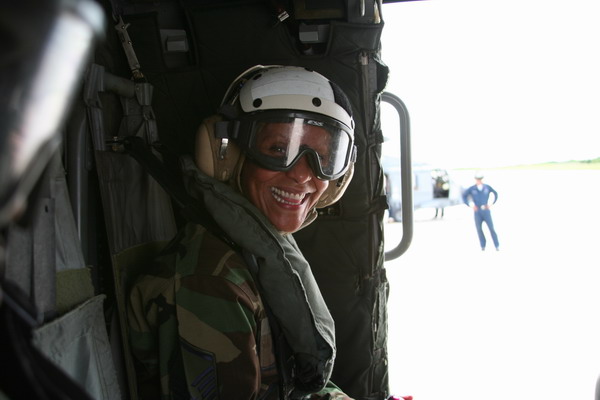
First order of business was to re-enlist Raven. Here is Col Westa administering the Oath of Office (in front of Tanguisson Beach, for your reference).
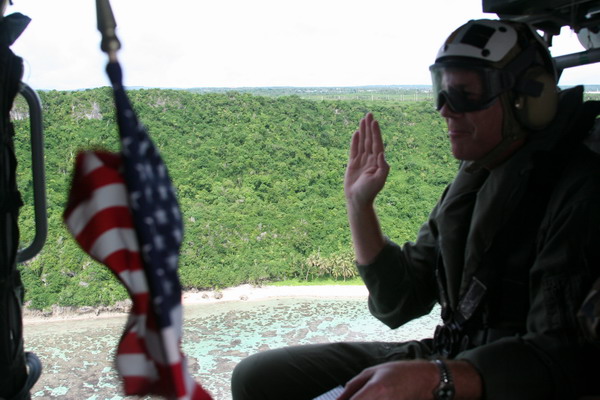
The is Raven reciting the Oath.
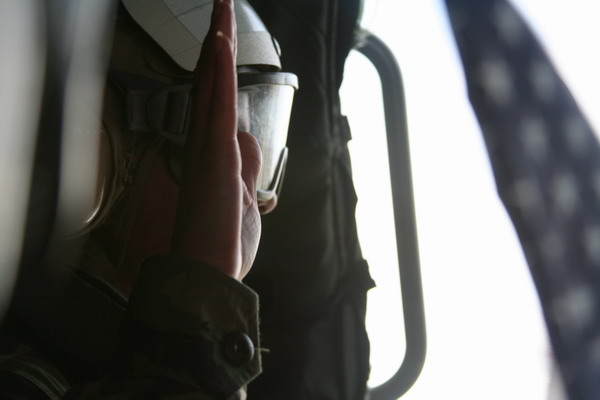
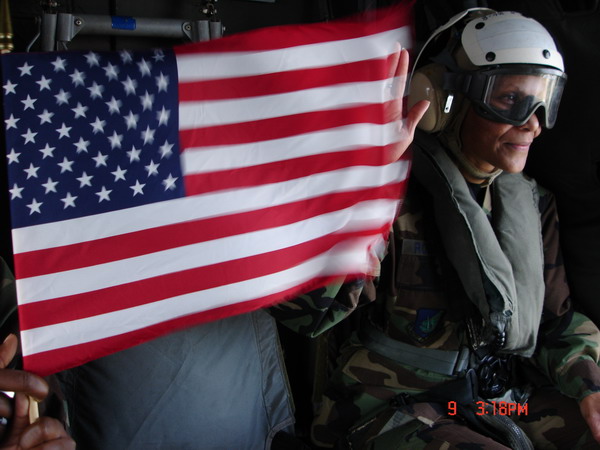
Here is JR (Raven’s husband) is inspecting the flag to make sure it’s ok still.
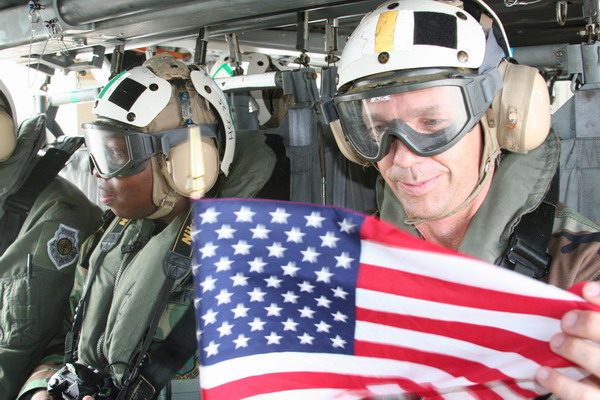
Just South of Tanguisson is Tumon Bay, with it’s tourist packed beaches and scenic hotels. This is the Hilton Resort.
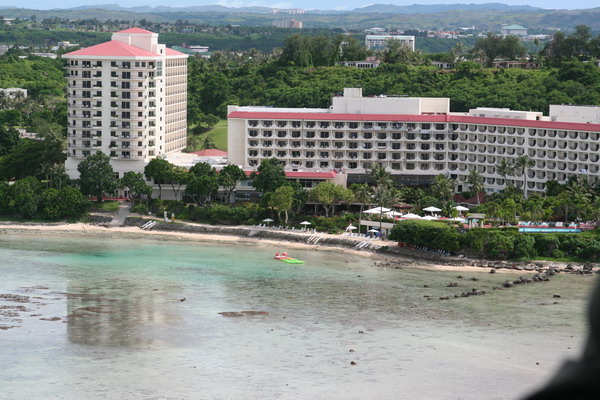
Here is one of the wedding chapels that cater to tourists who come to Guam to get married (mostly from Japan).
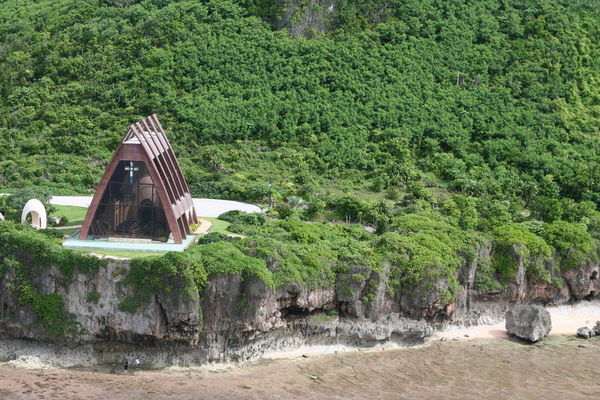
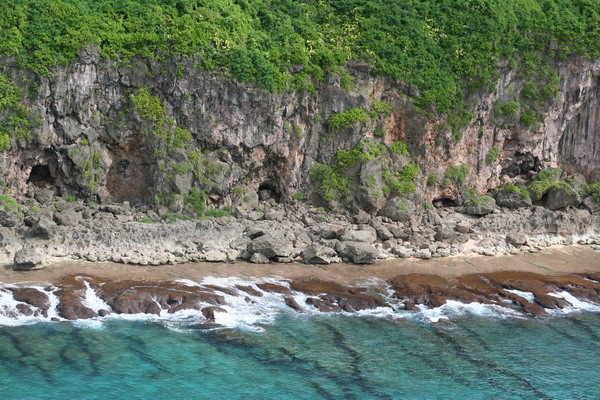
After only a moment, we rounded the point and came to our Agana Bay (if you look close you can see our condo in this picture, directly behind Alupat Island).
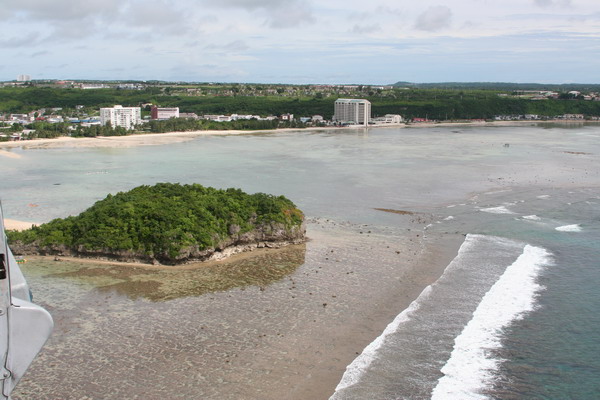
Here’s a better view of our place.
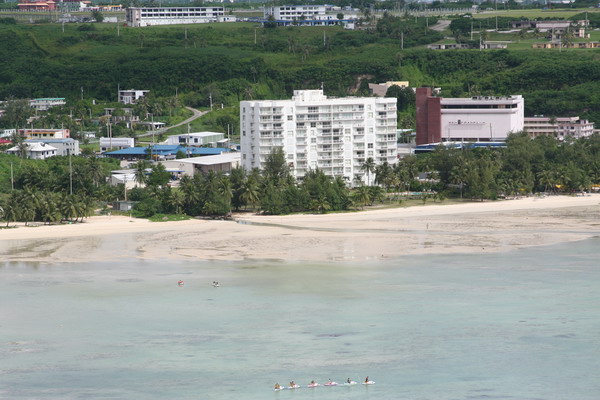
This is a good perspective to see the way jet skis are used here. It’s all about follow the leader with one jet ski wrangler out there to corral everyone and make sure there’s no passing… (he’s armed with a whistle and not afraid to use it!)
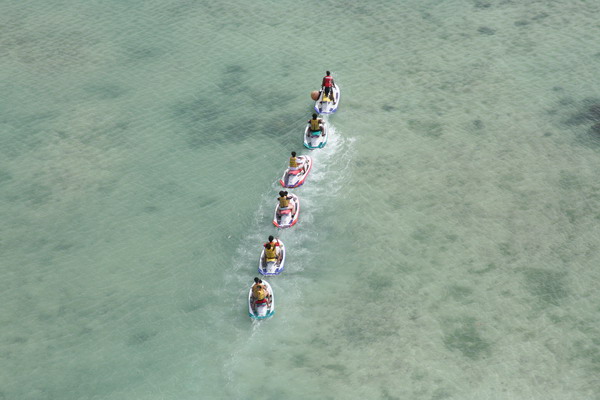
Follow the leader, round and round in circles…
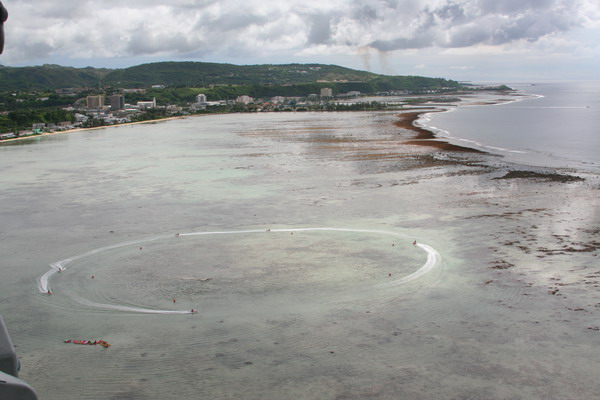
The hard coral here can be very pretty.
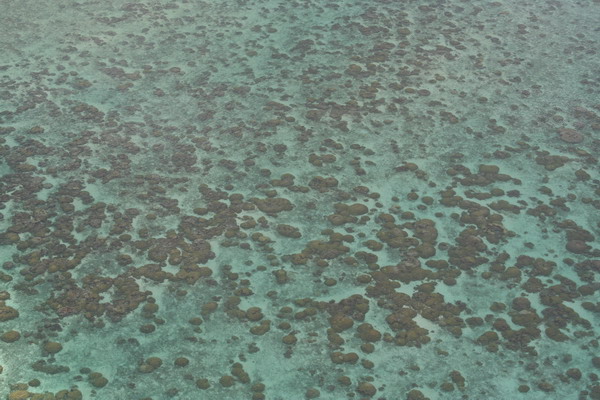
Since Guam is a bit isolated from pretty much everywhere, just about everything comes in containers like these.
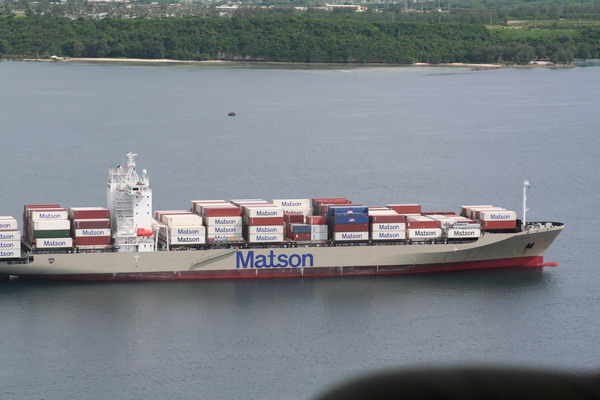
Here we are rounding the corner on Orote Point.
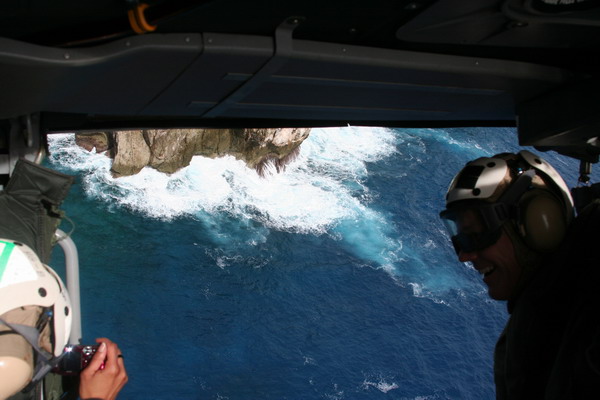
This is looking down on Spanish Steps (as you may recall, this is one of our favorite snorkeling spots).
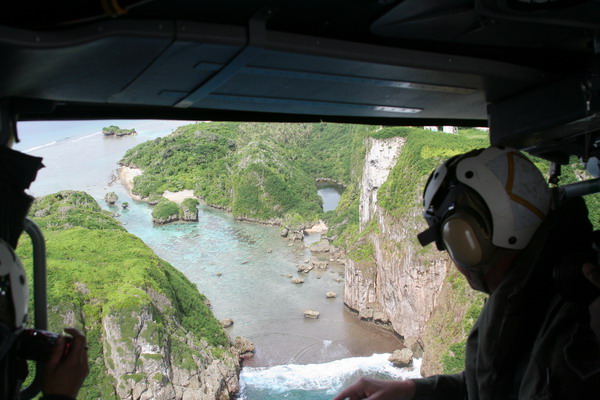
The water is such a nice shade of blue since the water is quite deep here.
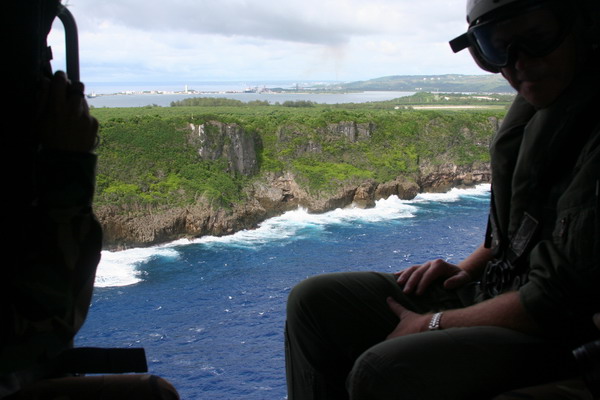
This is the Navy housing that could have a great view, if it were flat ground out to the sea…
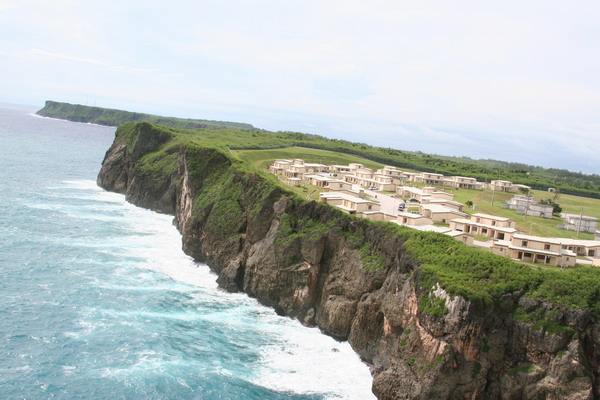
Marine Corps drive goes right by the ocean in many places.
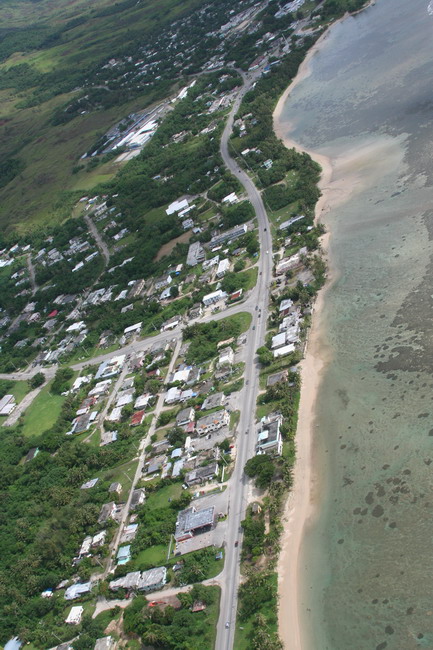
A view from down south looking north into Hagåtña and the surrounding villages.
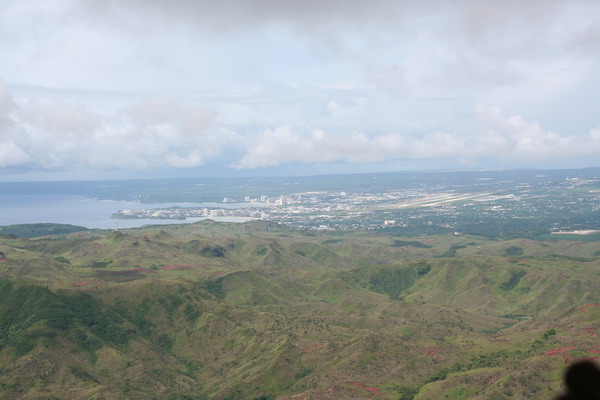
I’ll let you guess who this is.
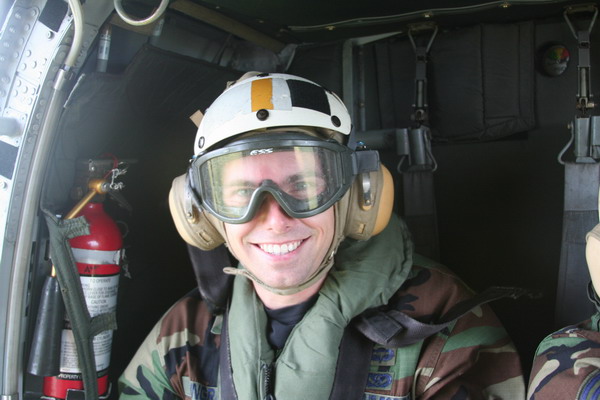
As we circled the south, we went inland to get a better view of a few of the numerous waterfalls in the area. Here are a few that we found.
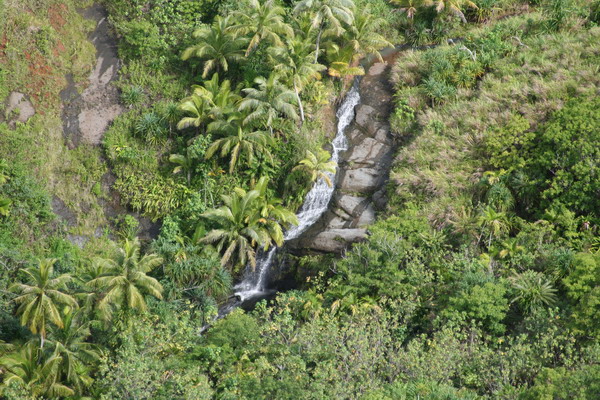
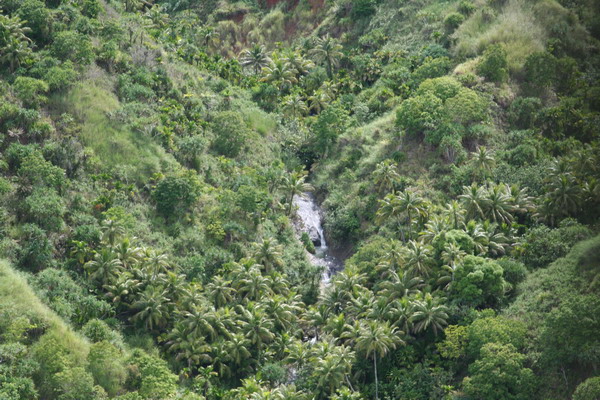
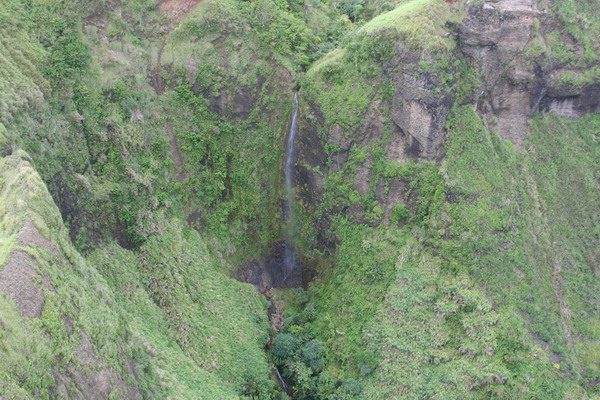
The mountains look very pretty from high above them. Of course, down in the jungles, the perspective is a little different.
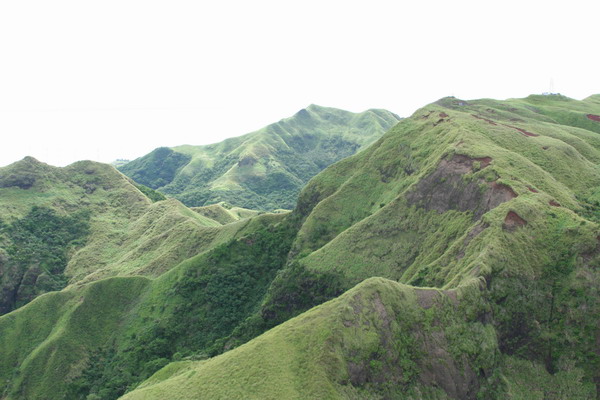
As headed down to the extreme southern end of the island, we went out past Cocos Island (as you can see in these next 2 pictures).
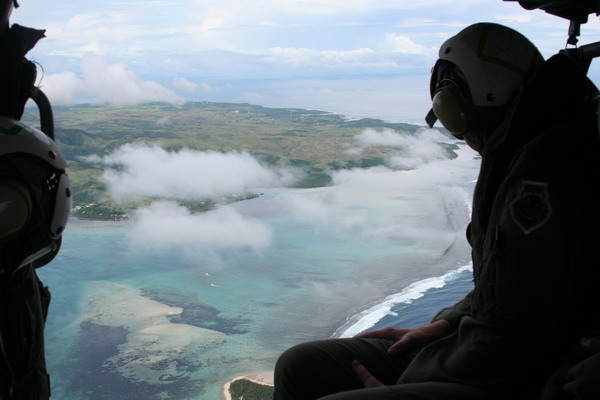
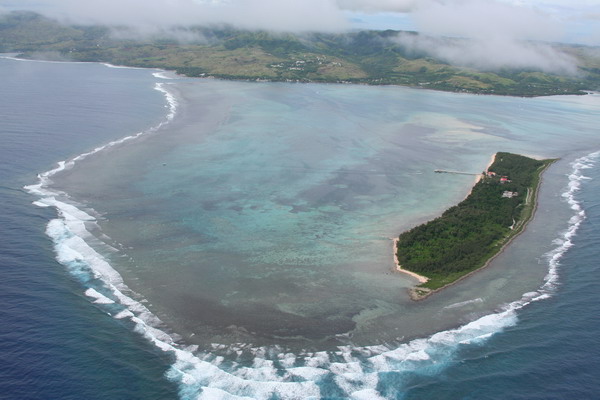
It was surprising to me that we could see animals so clearly in the water. We found a black tip reef shark and a sea turtle as they went about their day. Unfortunately, the were on the other side of the aircraft from me, so I didn’t get any good pictures, but it was cool to watch, nonetheless.
Now, this is up on the east side of the island (by Pagat Cliff). You can see Mangilao Golf Course in the background.
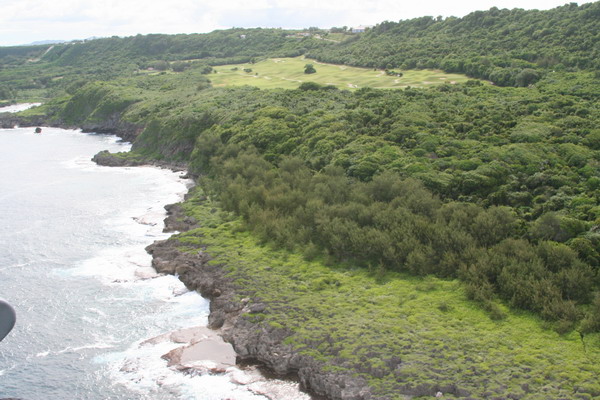
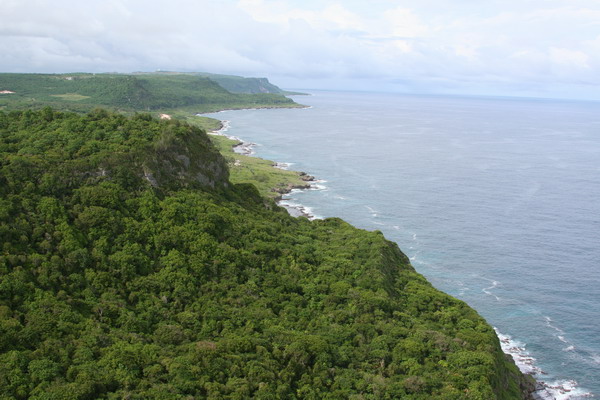
Another picture of Raven enjoying her flight.
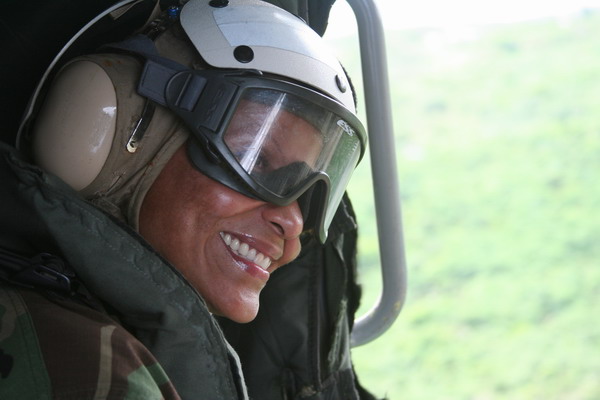
After about an hour and a half, we arrived back to the base. This is everyone as they got out.
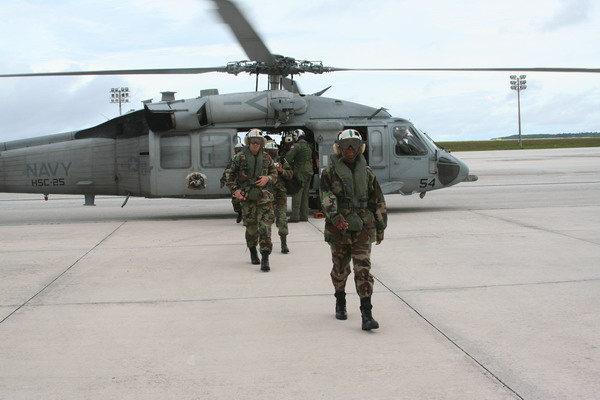
I know you can’t really tell, but this is me in the foreground.
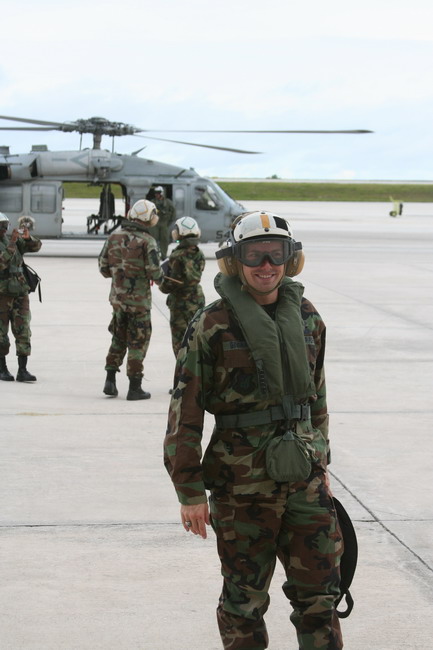
Here is Raven and Tammy. On the flight, we surprised Tammy with an embroidered number. The significance of that number is that it is her line number for promotion. It took a few moments for the importance of the number to sink in, but when it did, she was SO excited. We were all happy for her, as she richly deserves the recognition.
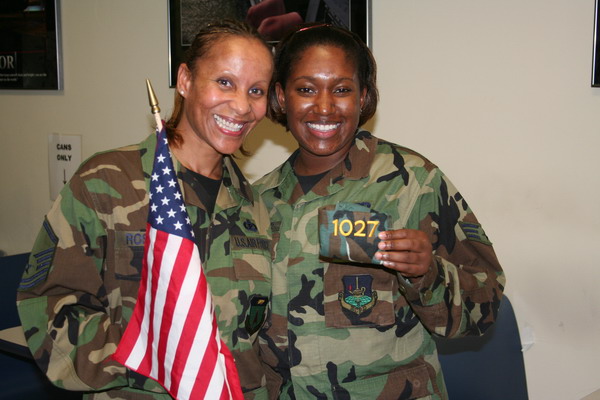
Col Westa with the 2 other women. It was my first flight with the Navy and it was a great one. I really enjoyed seeing the island from the air. A fitting way to bring our experience on Guam to a close.
Until the next adventure…
–Jim
Month: August 2006
China Part 6 — Xi’an people and places
Our final day in Xi’an was a whirlwind trip all over the area. We stopped by hot springs, palaces, old hotels with historical significance, a muslim mosque, and lots of people everywhere.
First up was an old hotel located at a hot springs right outside of Xi’an. Inside there was a small museum that showed what the area looked like in ancient times, since the hot springs were a favorite retreat location for emperors.
Here’s what one of the royal families may have looked like.
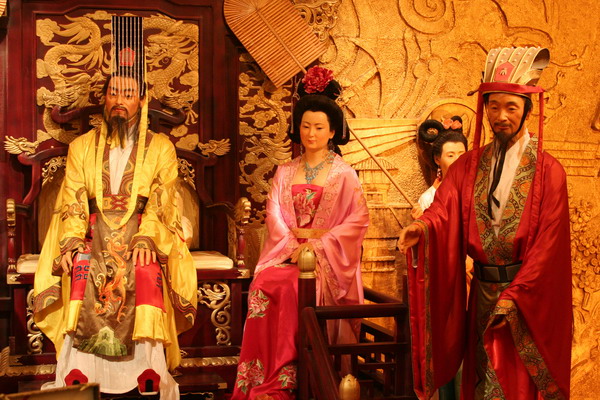
Every culture seems to have a legend of the most beautiful woman of the time. This sculture celebrates the most beautiful of all the women of the Tang Dynasty. She was a concubine of the emperor, and of exquisite beauty. In fact, all women in the Tang dynasty were unusual in that they enjoyed a very liberal and open-minded society during the normally very strict Chinese fuedal system.
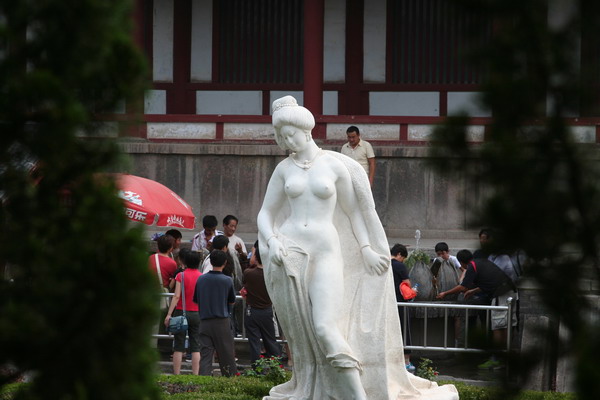
Now, in modern times, the hot springs served as an oasis for Chinese leader Chiang Kai-shek. As the Japanese invaded China in the 1930’s the battle between Chinese Communists and Nationalists also raged. However, recognizing the immediate threat of the Japanese, Mao Zedong (communist leader) wanted to band with the nationalist to counter the invaders, then decide the domestic division. However, Chiang Kai-shek was not convinced, and felt that the domestic dispute should be handled first. That brings us to the hot springs. Here, Chiang was taken hostage by Mao and the communists, who had the help of 2 of Chiang’s generals. However, Joseph Stalin felt it was not in the best interest of China, nor the region with the imminent Japanese threat, that Chiang be killed (as the communists wanted). So, perhaps through his influence, Chiang was kept alive and the two opposing sides were a United Front. This became known as the Xi’an Incident and is an important event in modern Chinese history.
Here’s a view inside one of the rooms. There are many bullet holes still pockmarking the area.
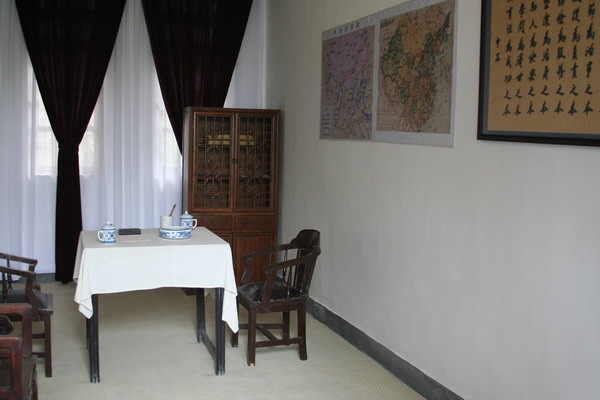
There was also this guy sitting around…
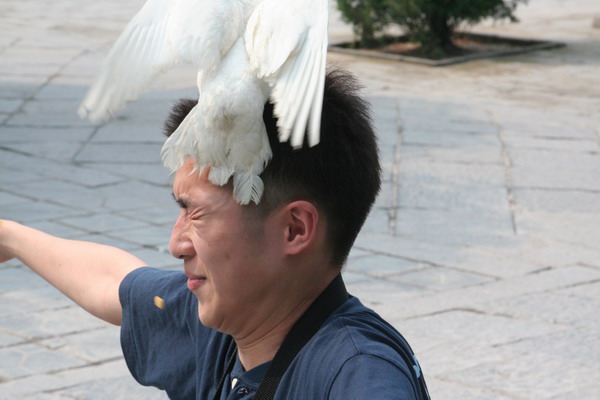
People there look like pretty much anyone else when they ride a bus…
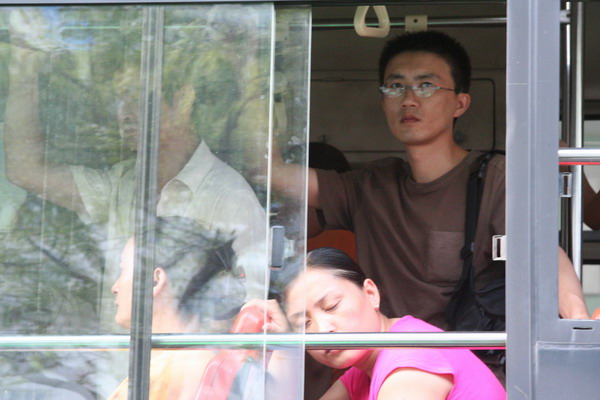
Some of the interesting tours we took were to a few local factories. While these places are mostly just tourist traps designed to suck you in and get you to buy over priced goods, it was still interesting to see the process. We visited jade, silk and Cloisonné.
Cloisonné is a uniquely Chinese art form that arose in the 13th century during the Yuan Dynasty involves shaping a piece of copper, then molding small pieces of filigree wire in intricate patterns. Finally, the spaces are filled in with enamel, baked in a kiln, sanded, and filled again, until the surface was brilliant color and smooth finish.
Jade is of course one of the minerals associated with China. We learned about the various ways it cut, polished, shaped into its final form and all about the different varieties and their relative value.
Finally, and the most interesting (because the process is much different than what we thought) was how silk is produced. Most significantly, it’s not a bunch of live silk worms producing silk at will to make this fabric (at least not exactly). It and after the fact process.
The silk worms create their cocoon to transform from larvae to moth with a single thread. Once it’s created by “domesticated” silkworms, the cocoon, with larvae still inside are boiled in water (to both loosen the construction and kill the larvae).
Sometimes, the cocoon contains 2 larvae and these twin cocoons produce a fine, but lower quality silk that is used for things like comforters. Here’s what they look like.
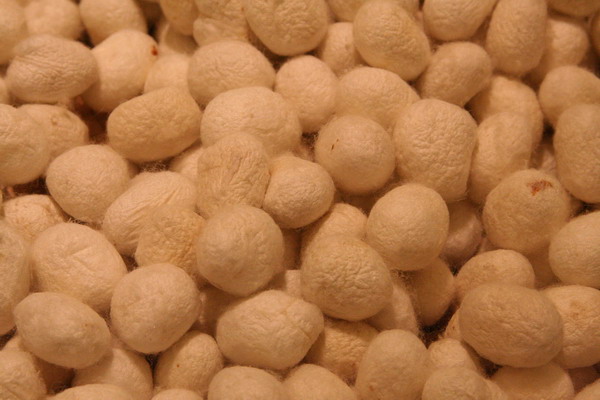
Don’t you think Anna should be a professional hand model?? 🙂
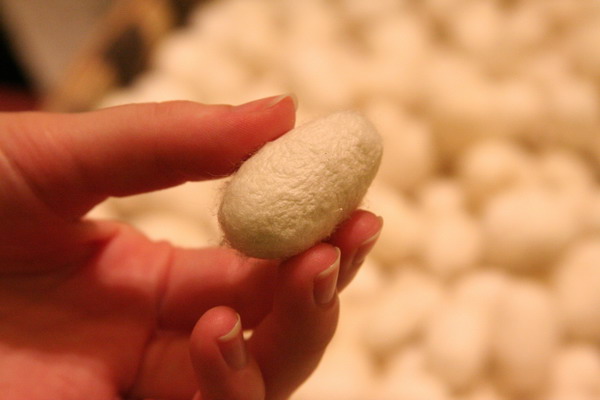
Here is one of the workers extracting the larvae (without breaking that single strand). Don’t worry though, the larvae is also eaten (it’s high in protein after all), so the whole process is very efficient.
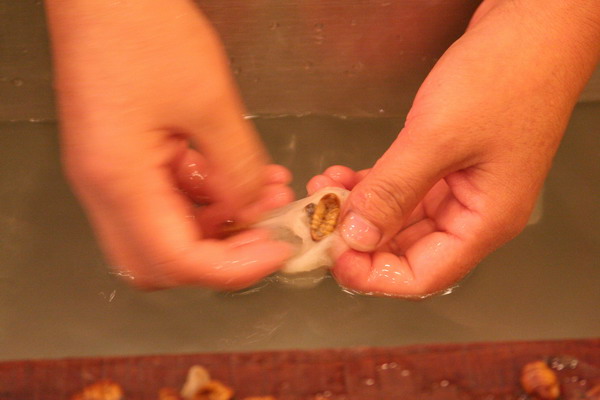
Once the material is washed and cleaned, it can be stretched very far, yet, the fiber remains very strong. You can see these women spreading out the material and a comforter can take up to 9,000 cocoons to make the large, thick ones.
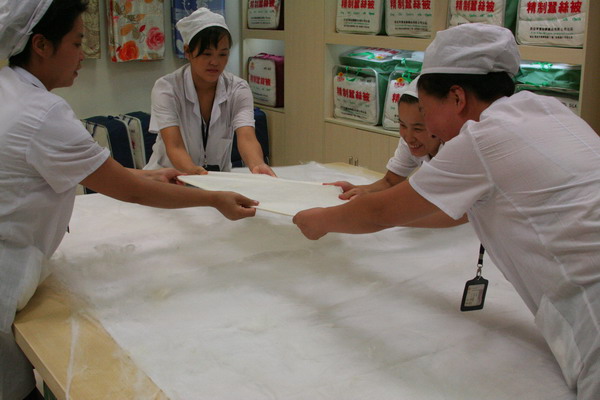
Back on the way into the city (note the city wall in the back ground), surprise, surprise, we found many bicyclists. It’s interesting to note that bicycles in China cost about $25 new and $5 used, so it’s certainly the most economical means of transportation (although the bikes may not be the “best” quality). Of course, with all the older vehicles and factories spewing tons of noxious gases, the air quality in both cities was VERY poor as smog was ever present.
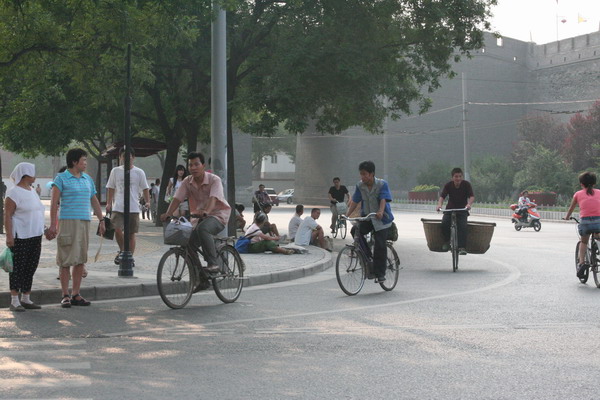
In keeping with our religious smorgasbord, we visited a muslim mosque. To get there, we wound our way through the Muslim market. It was a fascinating place and since it was only a 5 minute walk from our hotel, we decided to come back after dinner.
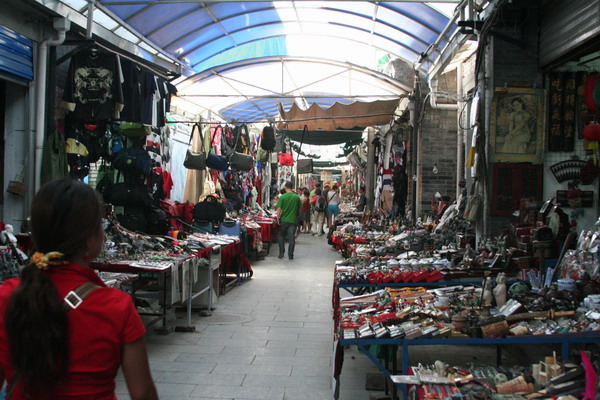
This is the inside of the mosque courtyards. Although, the actual sanctuary is only for muslims, the grounds were very pretty.
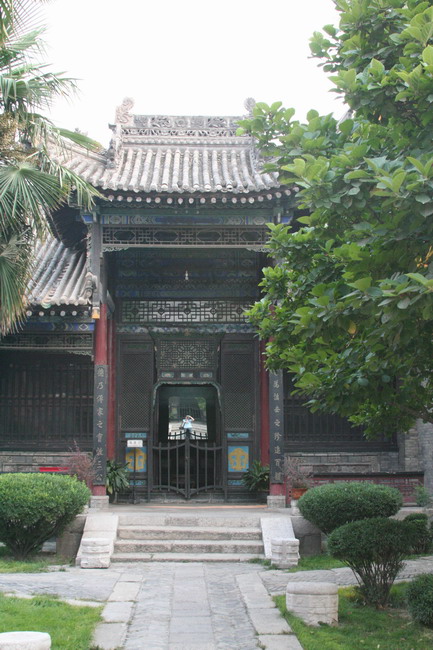
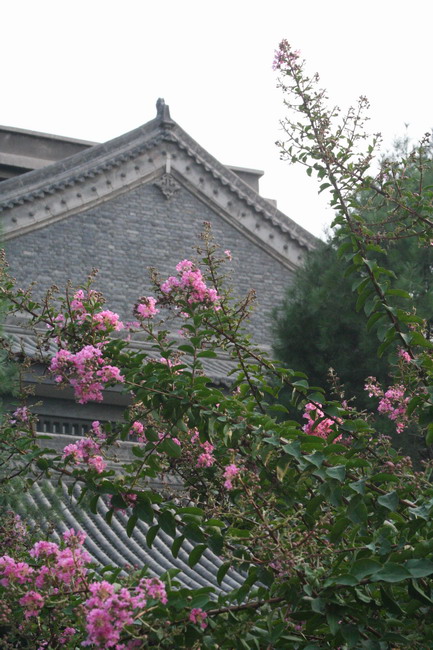
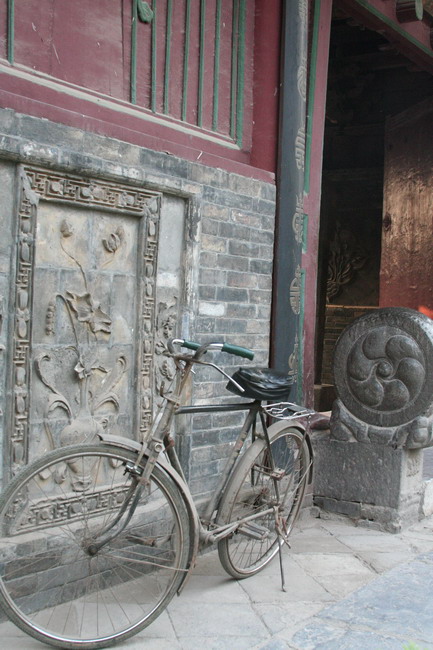
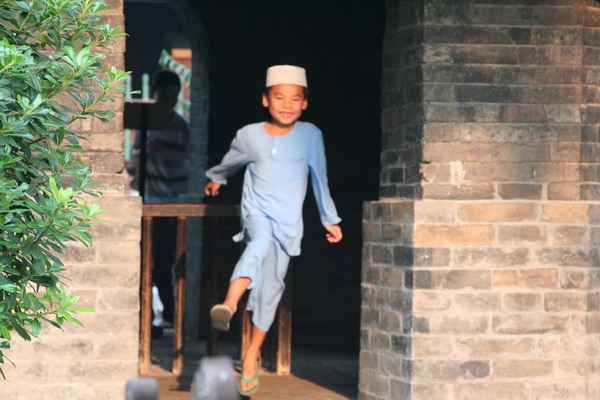
Back in the market, we found lots more very photogenic people. 🙂
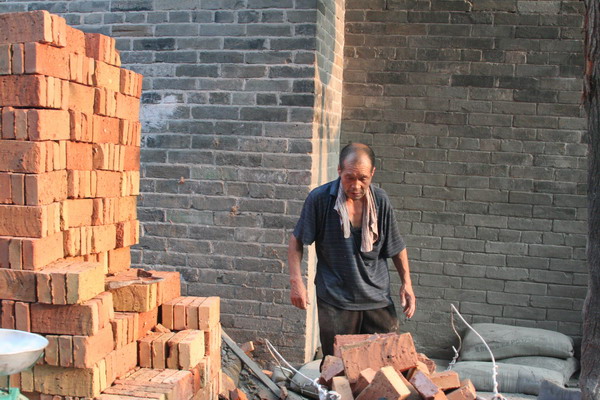
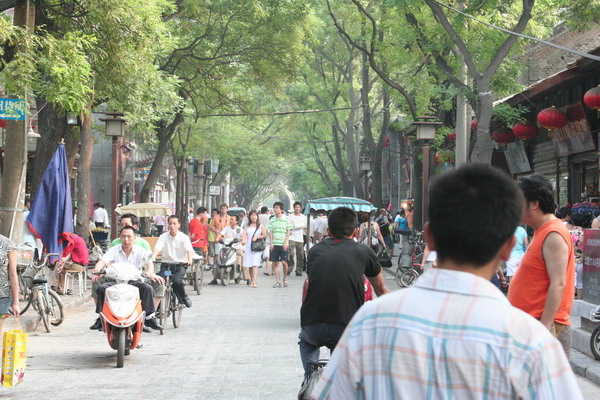
Dinner was being prepared all over the city…
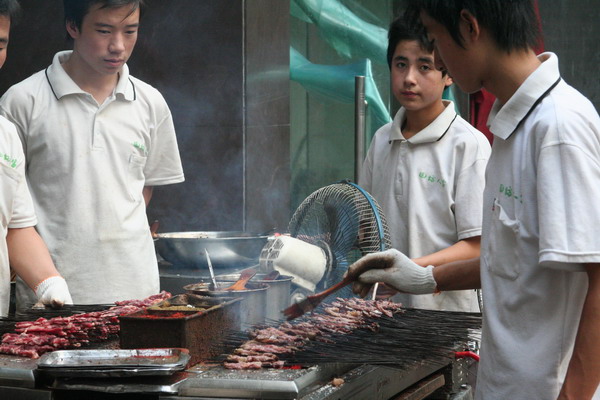
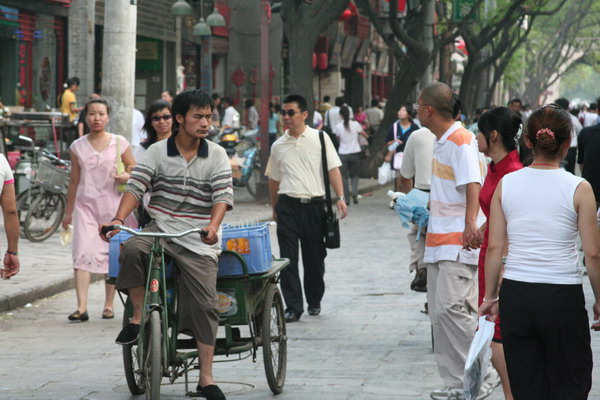
We found many people who were very active in their pursuit of recyclable goods (like plastic and aluminum bottles) by actively seeking people’s empty containers. Here is one man doing just that, except it’s in the waste already discarded.
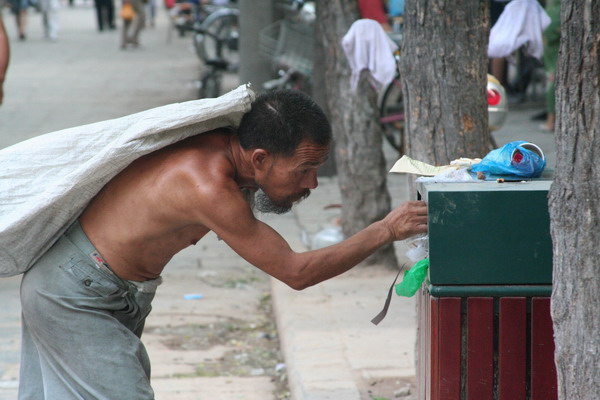
Of course, sanitation wasn’t nearly as important there…
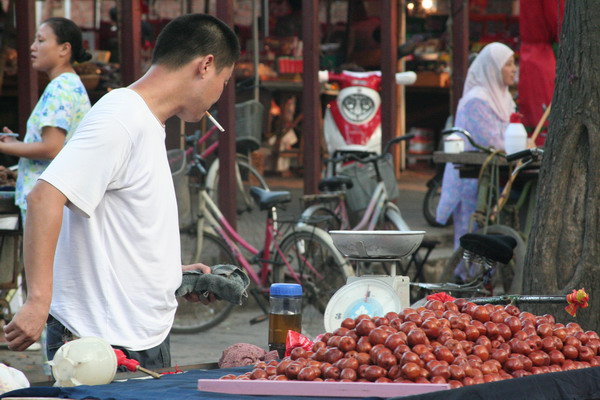
This is the view from just outside our hotel. It’s of the Bell Tower, which is partnered down the road with its twin, the Drum Tower.
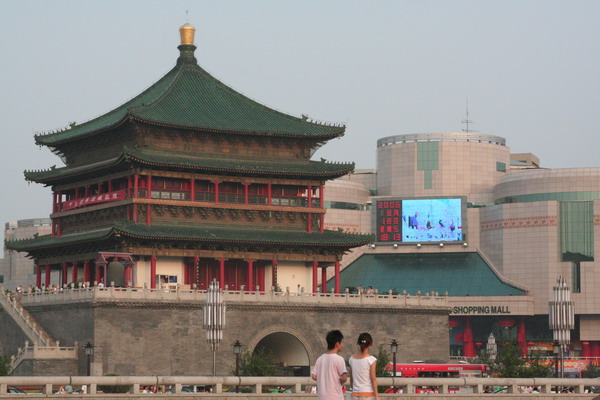
While we had a feast of dumplings, I thought these fish tanks were a unique feature of the restaurant.
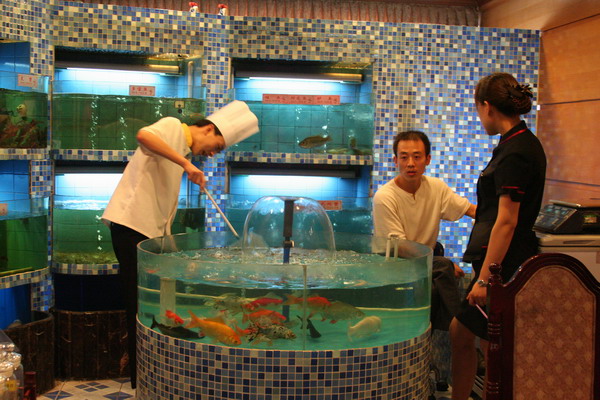
After our last dinner, Anna went for a foot massage, and I headed back to the market to capture some of the beautiful images I saw earlier.
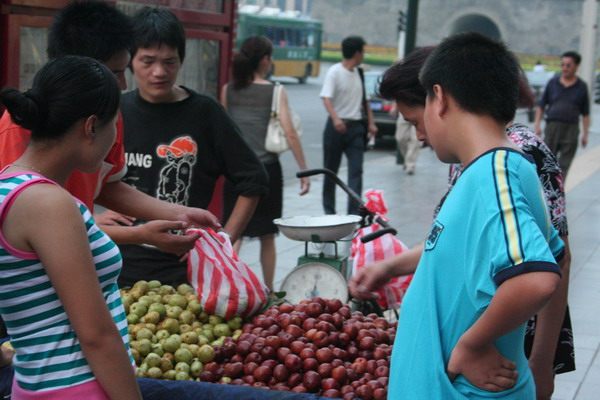
Every market we went to was an explosion of sight, sound and smell.
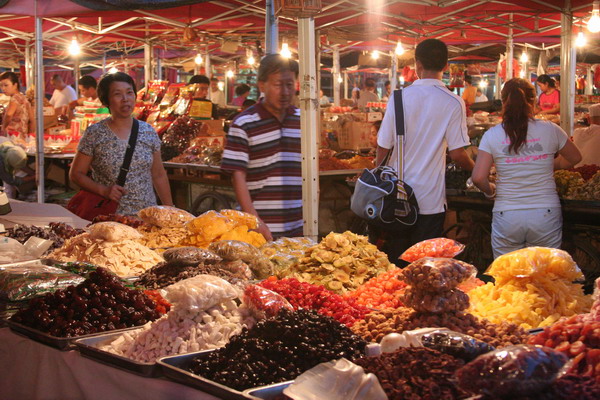
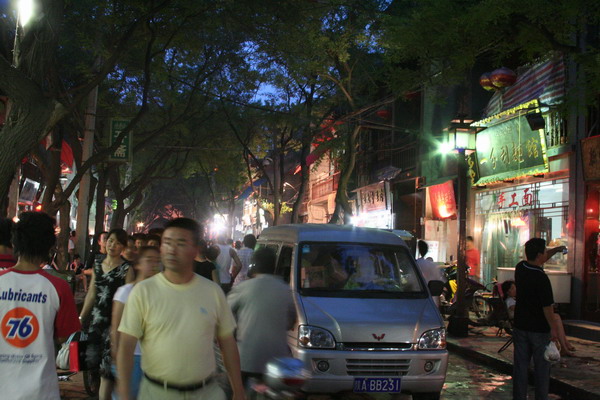

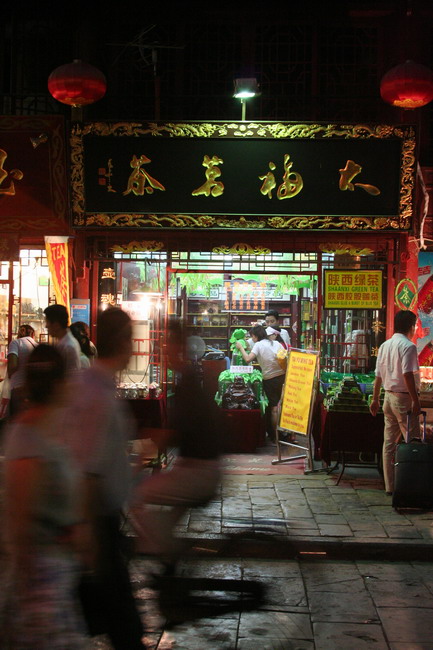
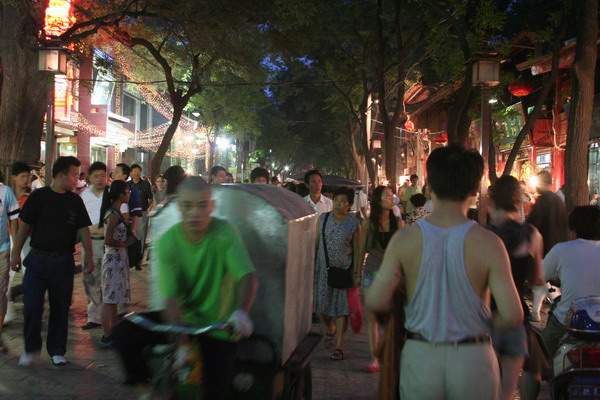
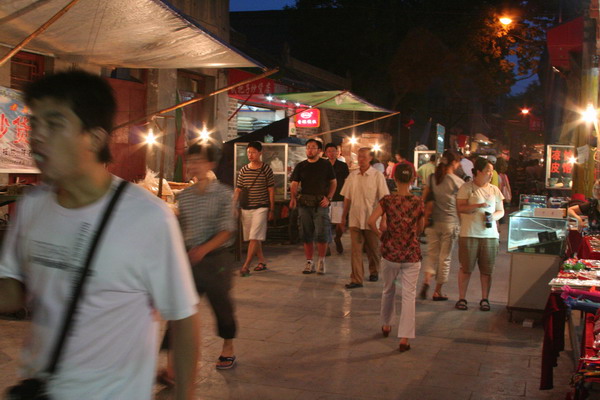
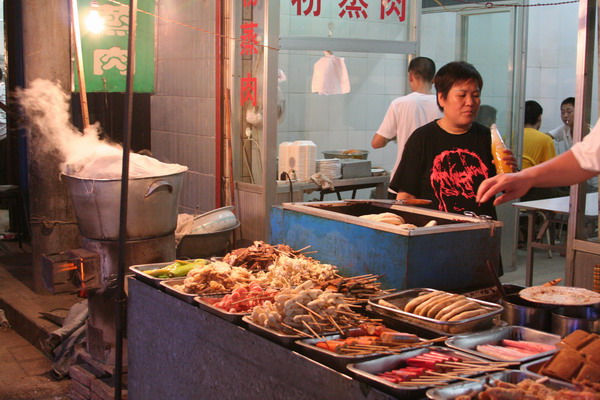
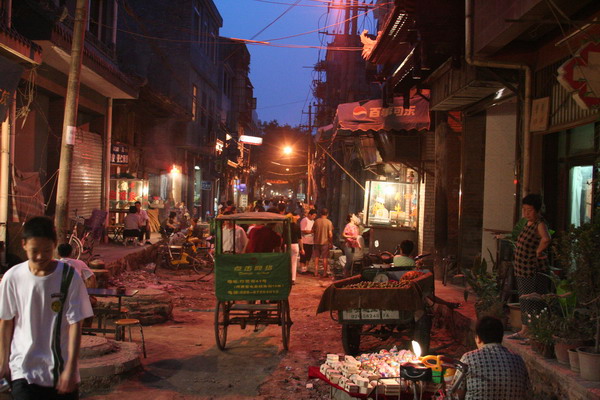
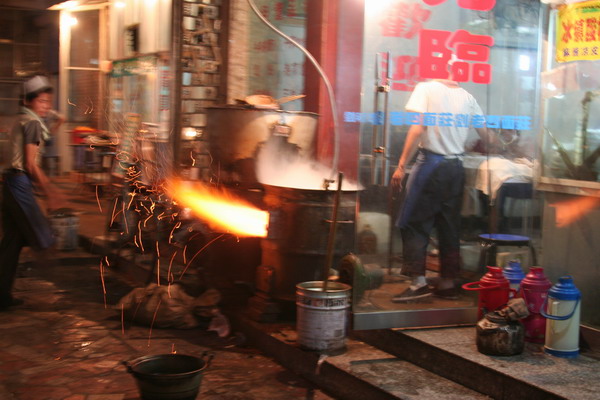
As we made our way back to the hotel, we found the Bell Tower ablaze in lights.
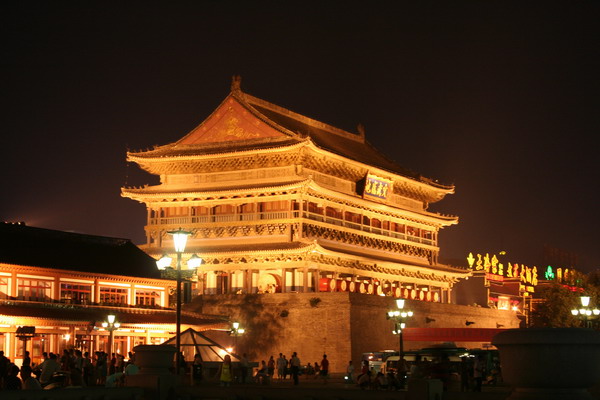
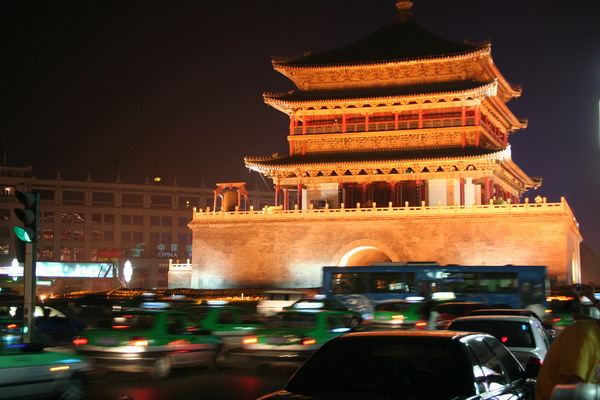
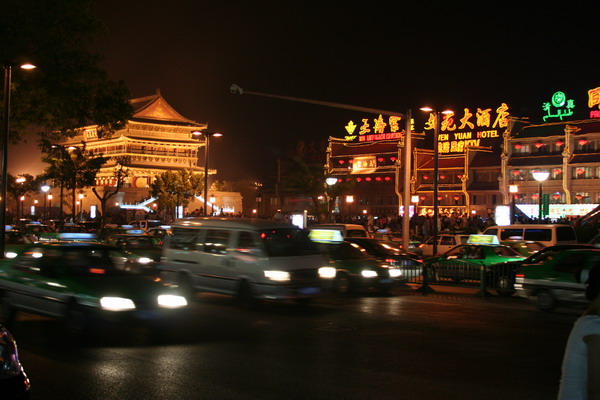
The next morning, we got up and started the long journey back to our home. All in all, it was another spectacular journey in the pursuit of adventure, history, and cultural understanding.
We found the people to be very kind and welcoming. The food to be typically very tasty. Goods were inexpensive. The history of the region surrounded us at every turn. It was a journey we’d recommend to anyone. Like any of our adventures, if you have any more questions about it, please don’t hesitate to ask (leave a comment or write us an email at JimAnna02@yahoo.com).
So, until the next adventure.
–Jim
China Part 5 — Terra Cotta Warriors
We had the opportunity to visit the 2,000 year old Army of Terra Cotta Warriors. This experience was right up there with our visit to the Great Wall.
If you are unfamiliar with what I am talking about, the Chinese Emperor Qin Shi Huang. He was the emperor who first united China in 221 B.C. (also started building the Great Wall). This army was to protect him in the afterlife. His mausoleum is also believed to contain and entire palace (complete with halls and offices, as well as the warriors). We don’t know, however, as a large portion of the site has yet to be excavated. We do know that there are at least 6,000 life size soldiers (all 5’11” – 6’1″) in full battle formation including weapons and true to life poses. Most significantly, while there are only a handful of different figures (infantry, archers, officers and generals), each one has a unique face.
The site was only discovered in the spring of 1974 by a local farmer digging a well. He happened upon one of the remnants of the warriors. As it turned out, his discovery was right on the edge of the massive field of warriors. Now, that fortunate farmer can be found just about every day at the site to sign autographs and accepts donations (as you can imagine, he was compensated by the communist government). However, surprisingly, he doesn’t allow anyone to take his picture.
Now, on to the site…
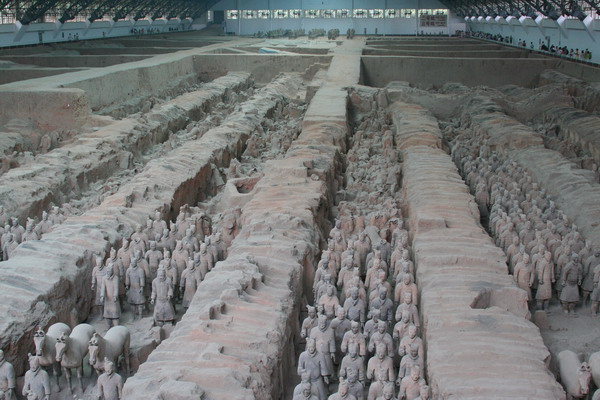
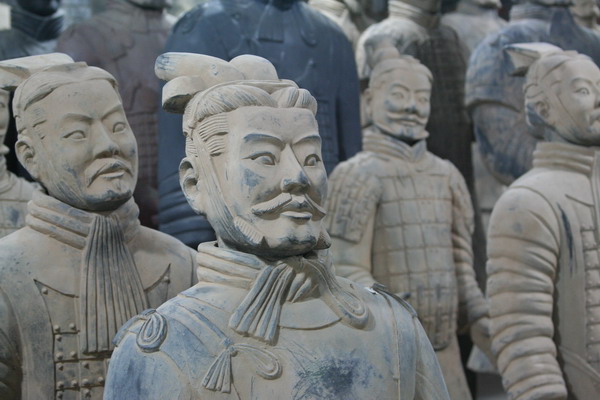
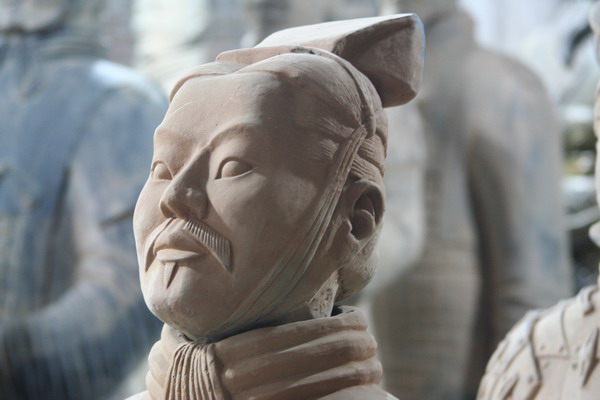
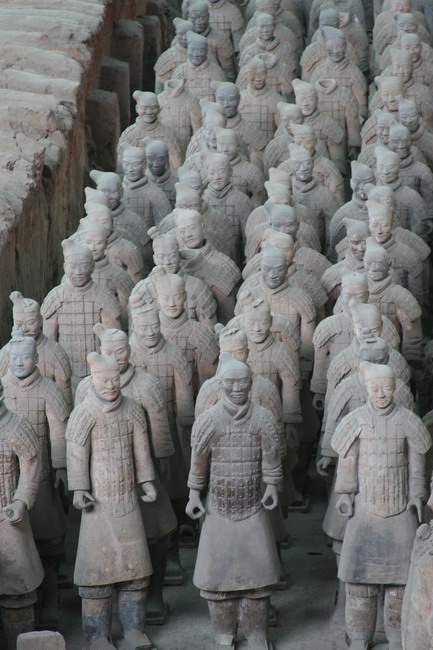

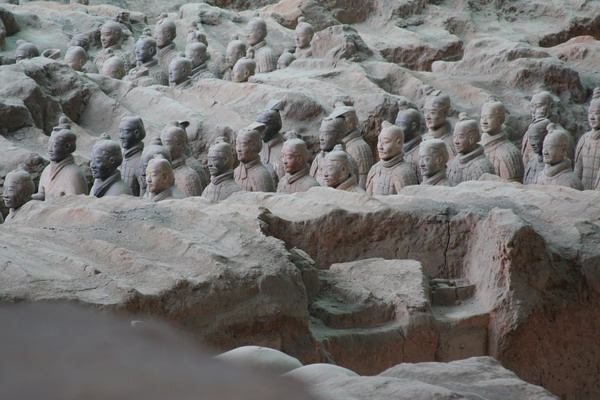
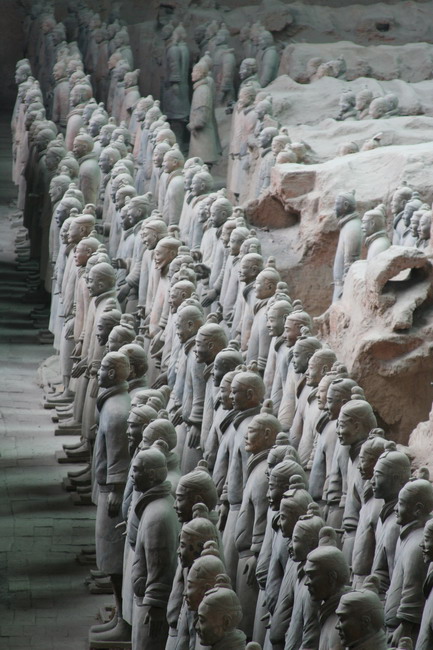
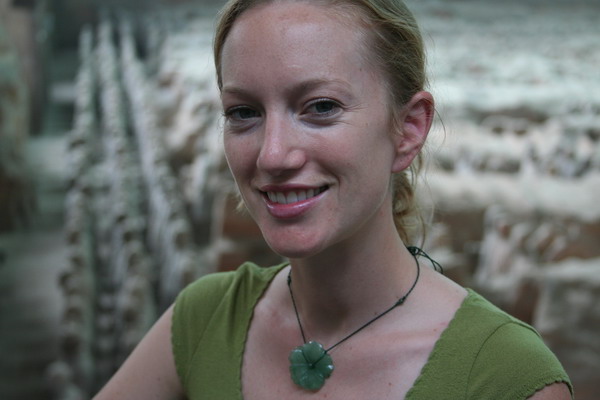
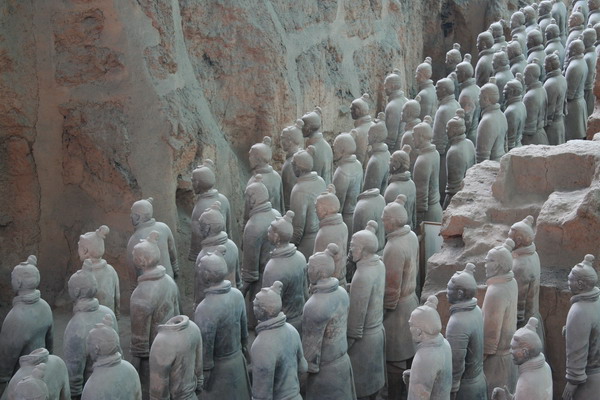
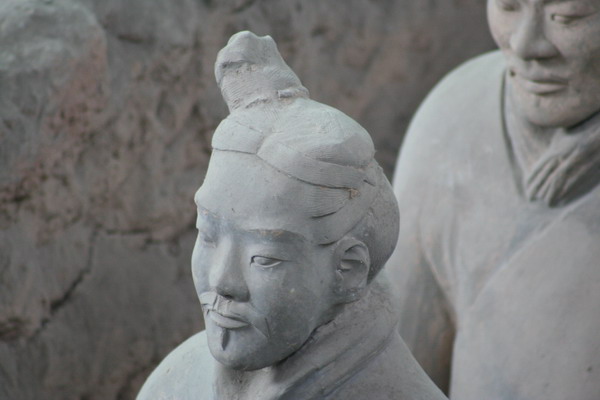
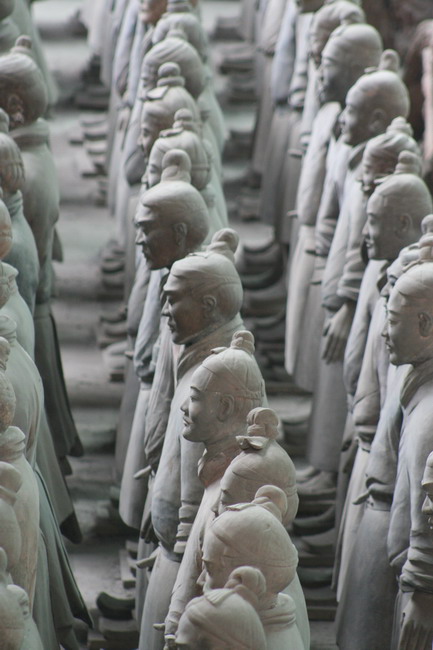
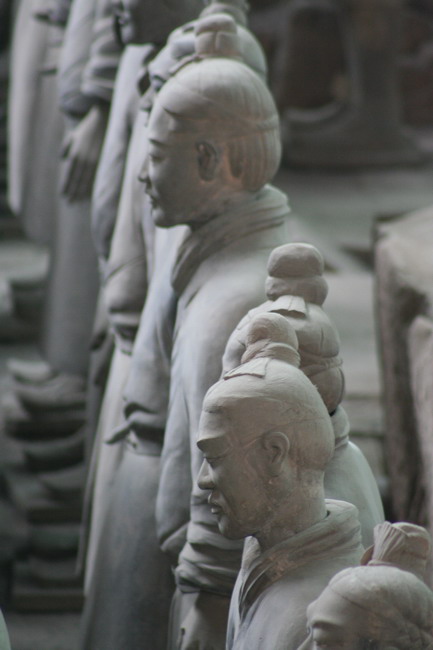
You can see that not all of the warriors were perfectly perserved. Some were destroyed by marauding looters who wished to undo the work of the emperor, and others were from more natural causes.
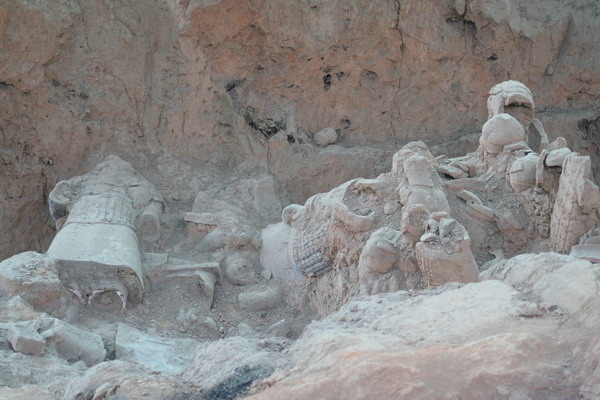
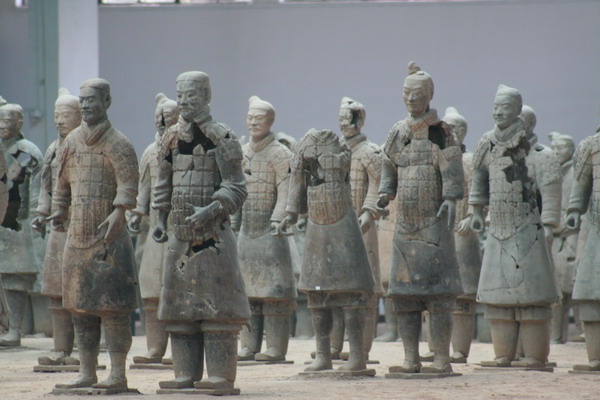
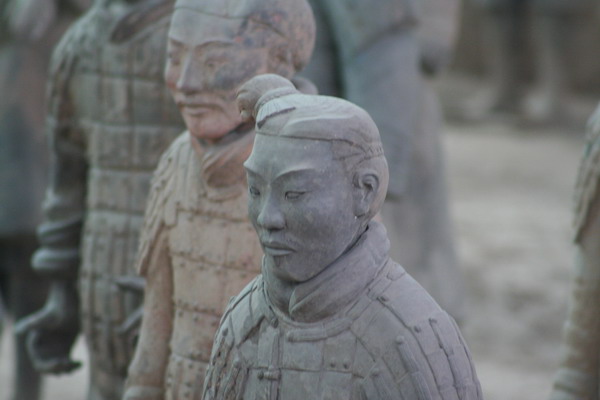
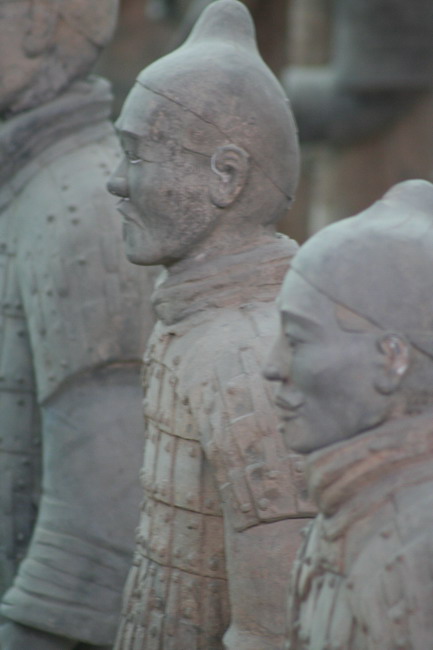

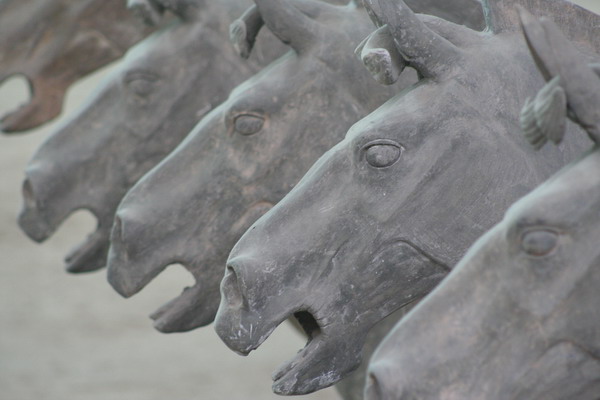
There are three pits that contain the warriors. The first is the largest and most spectacular. After we finished wandering around the first pit, we took a break for lunch. There we had a tasty lunch, that included hand made noodles by these cooks.
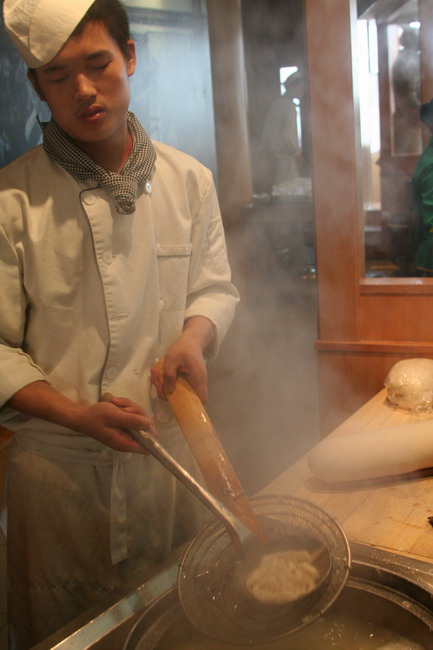
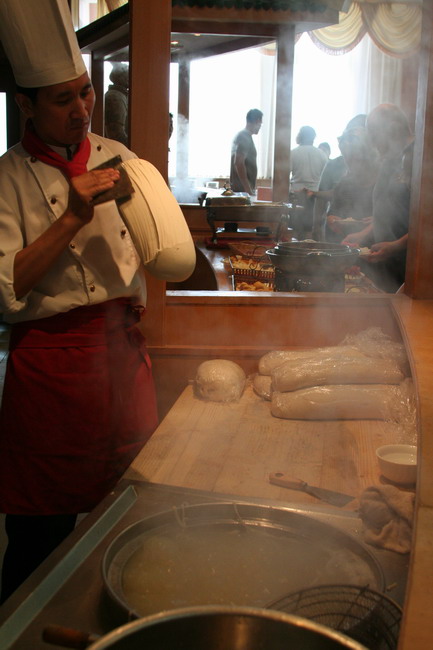
Also on the grounds there is a small museum that contains a well preserved example of each type of warrior.
This is the kneeling archer.
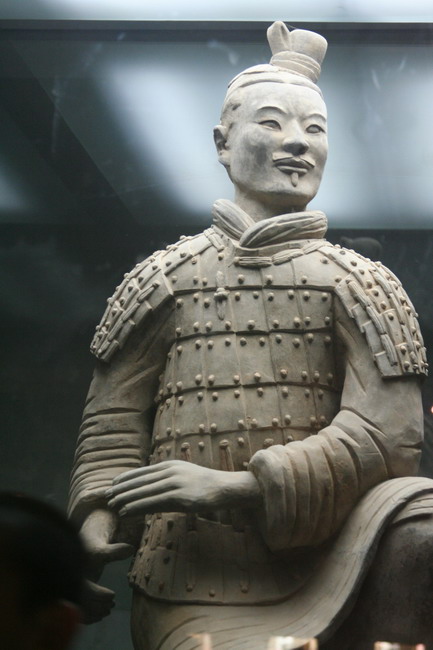
An officer.
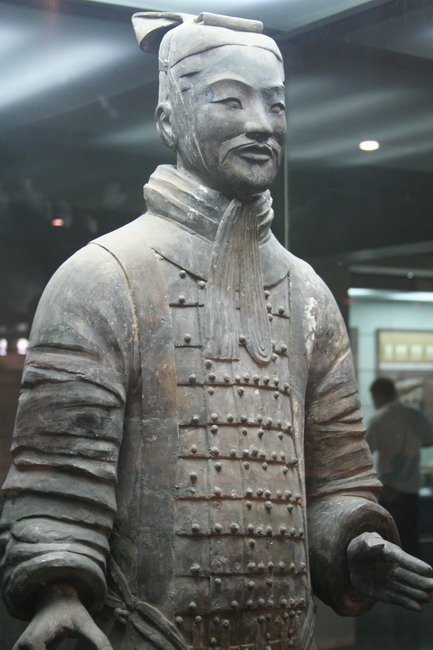
A general.
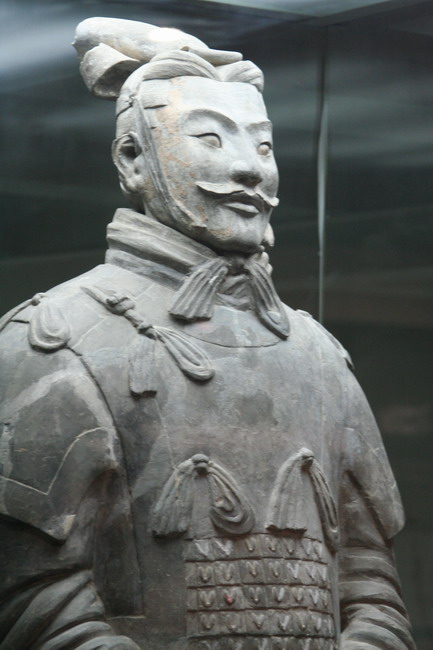
A cavalryman.
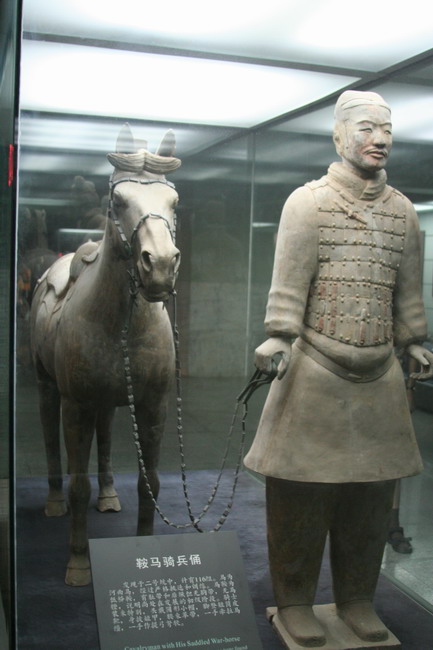
A standing archer.
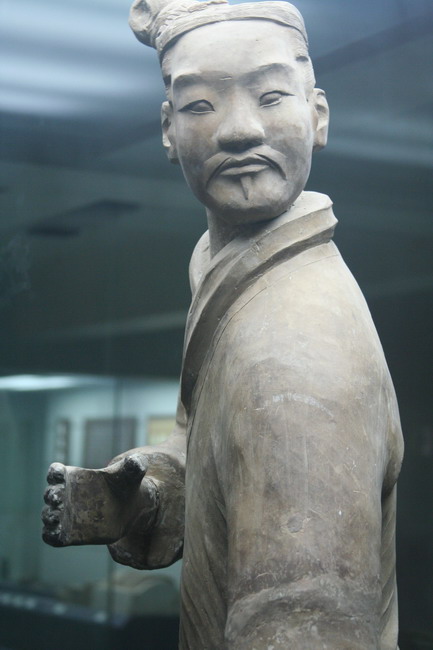
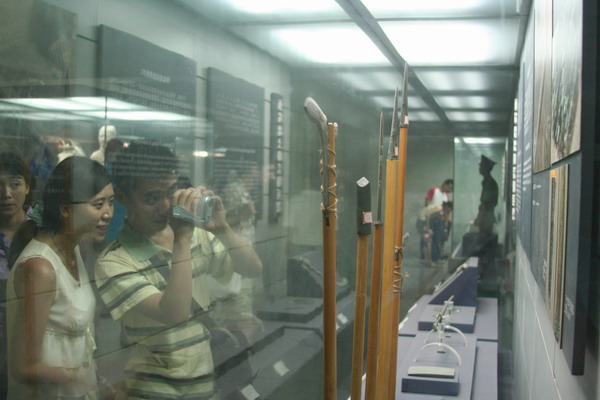
As you can imagine, there were lots of tour groups. This is one common way to identify everyone in your group…
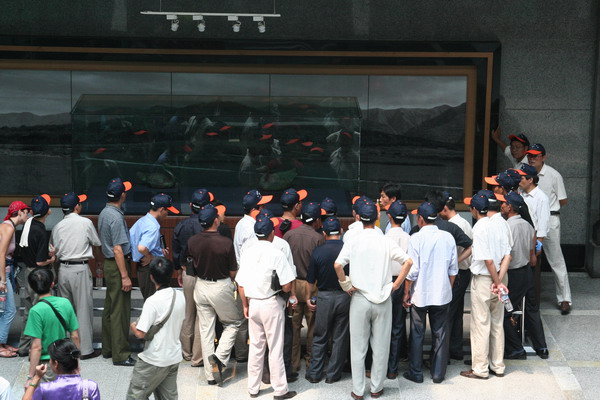
We also visited a factory that makes modern versions of the statues. While the originals were painted in vibrant colors, the replicas are made to look like they were when the warriors were unearthed (although some still had paint when first excavated, the paint quickly disappeared). The bonus was that we were able to see the process and get up close and personal with the statues.
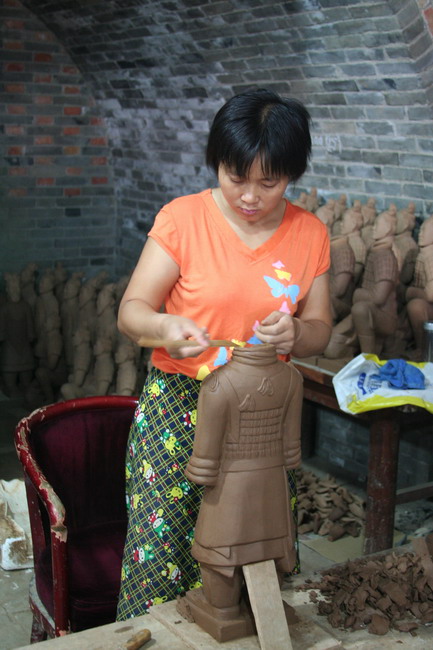
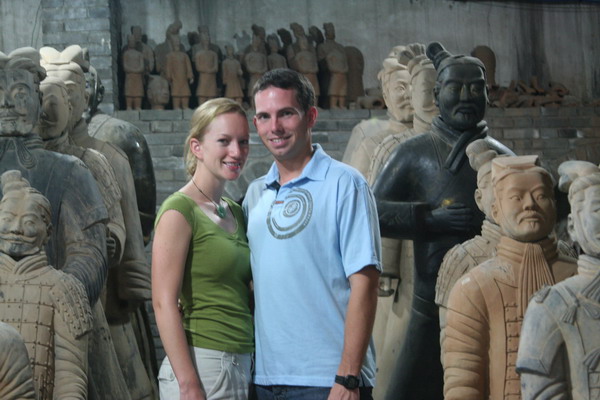
Wow, what an amazing site and that fact that they were recently discovered, with possibly a vast trove still to be unearthed, made this visit even more memorable.
The last entry will look at more life in Xi’an and a little about the silk making industry in China.
–Jim
China Part 4 — Xi’an and World Park
We had mixed emotions about our last day in Beijing. Our main stop on the itinerary was to a place called World Park. It’s a park filled with replicas of the world’s monunments at one tenth size. While it was somewhat interesting, we mostly got the feeling that it was a very touristy with not the best construction.
However, there was a crocodile and elephant show done by some Thai nationals. The show was entertaining, but we heard that if zoos are like prisons for animals, then the zoos in Beijing were like death row. So, suffice it to say, that as fun as the show was, we came away feeling sorry for these poor creatures.
That said, here are the images from the show.
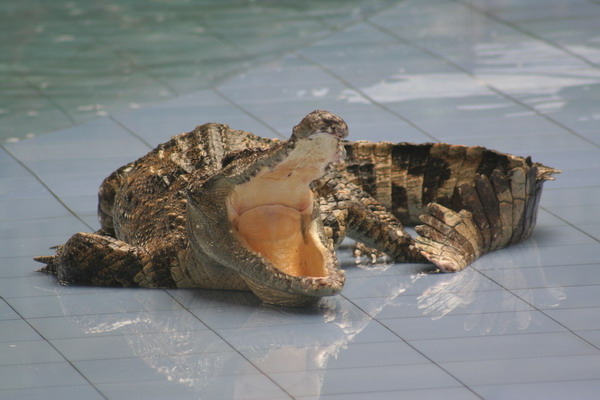
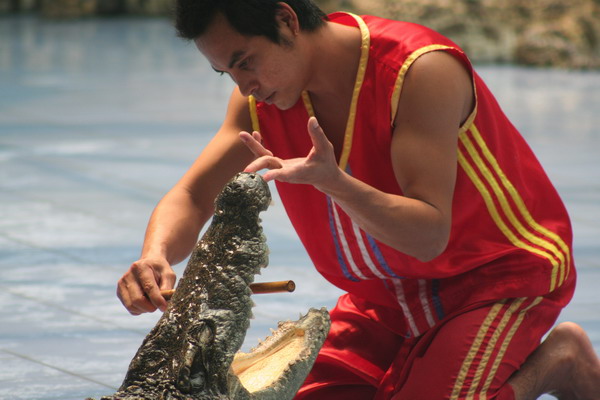
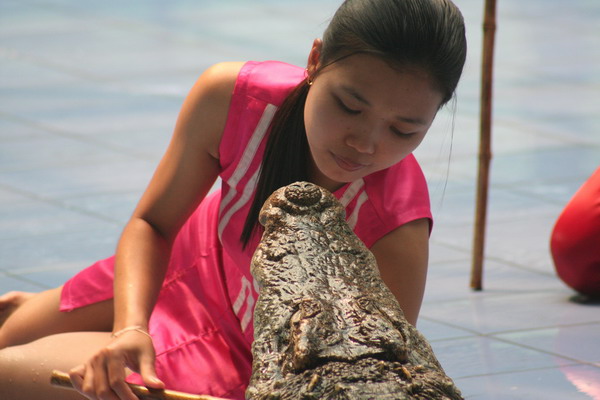
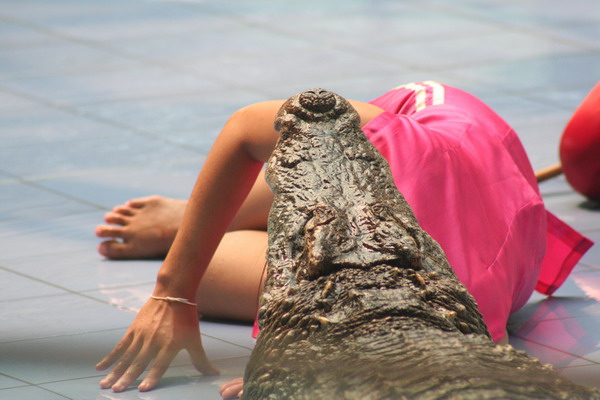
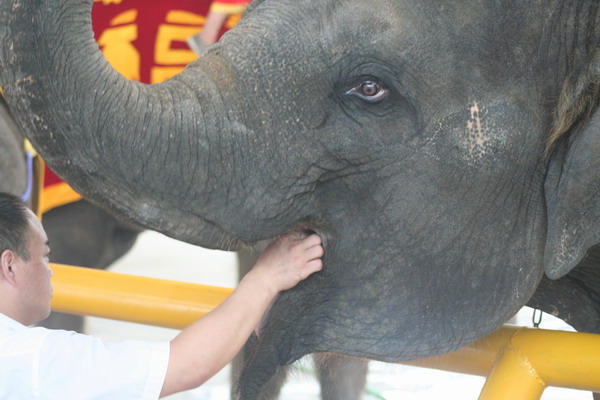

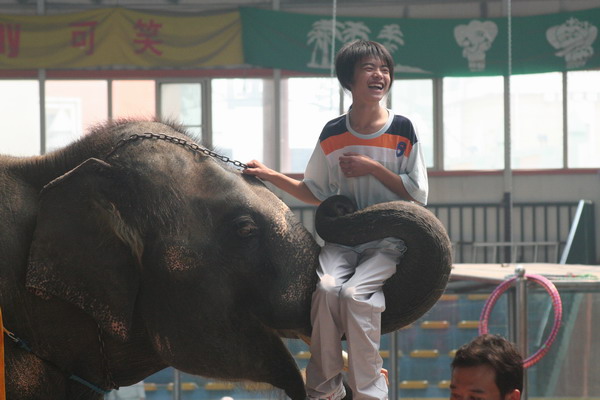
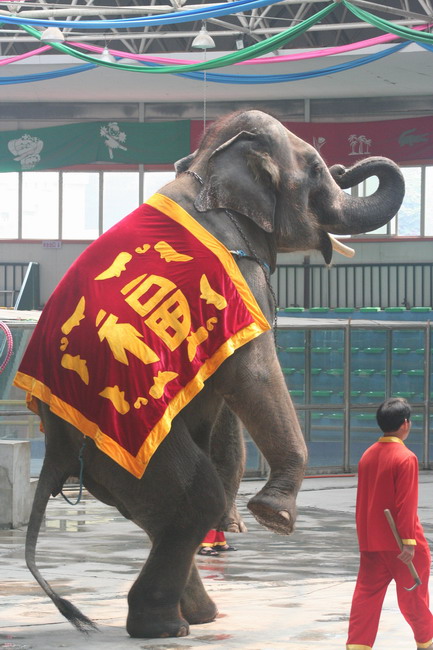
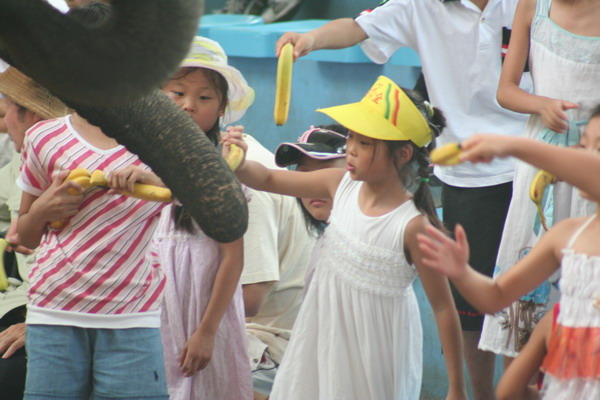

Then, back to downtown Beijing to visit on last temple.
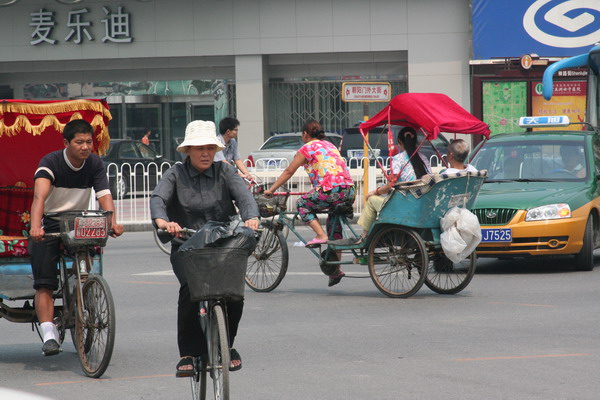
This time we went to Lama Temple. Lama, as you may be aware, is the term for a Tibetan religous (Buddhist) teacher (similar to a Guru). So, there were many young monks around and this temple was probably the most vibrant of all the ones we visited (even if the pictures don’t really show it…).
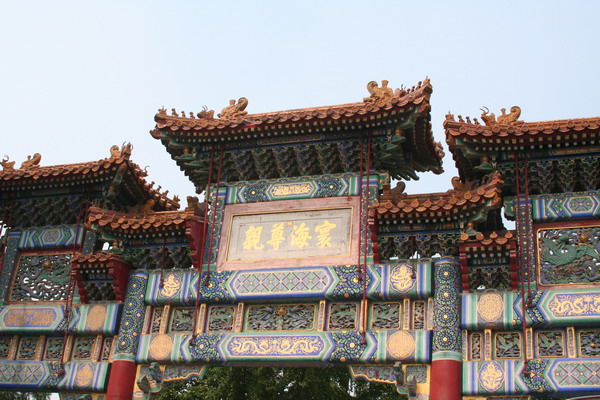
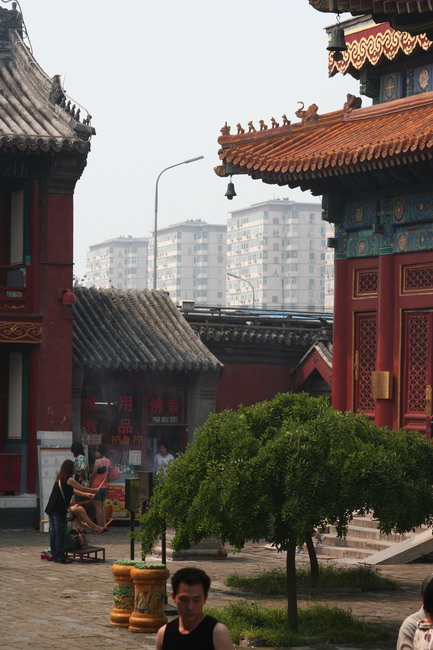
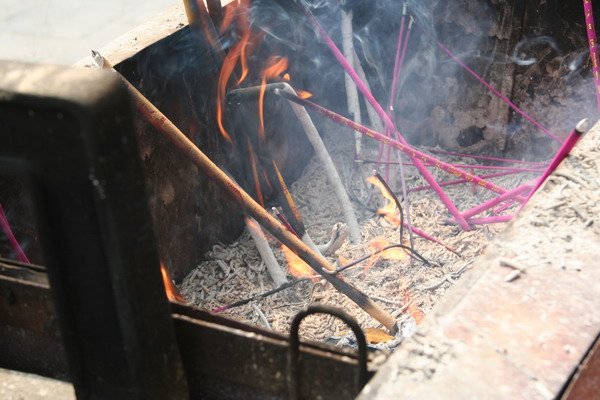
Here is our guide, Woo, again.

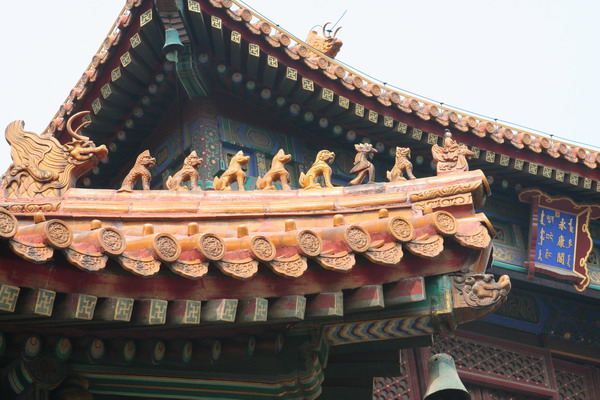
A couple more images of city life in Beijing.
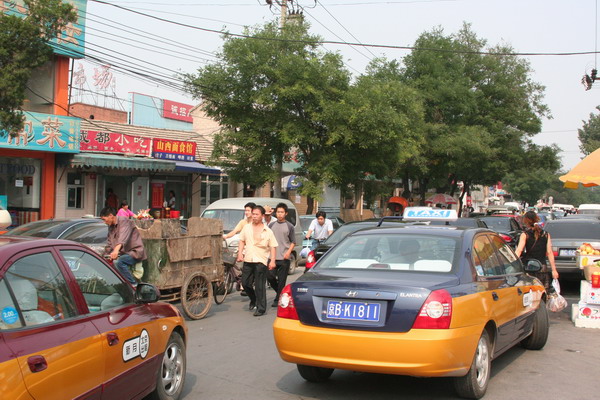
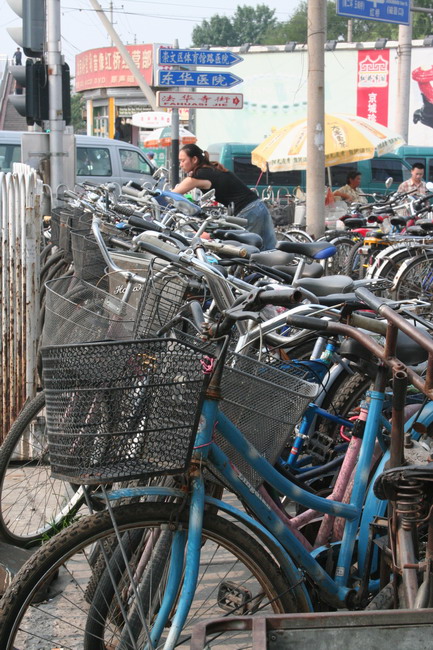
After our time in Beijing, we boarded a flight down to Xi’an. While Beijing is a massive megapolis at 16 million people and feels like an enormous city, Xi’an, is also a large city by all rights with over 6 million inhabitants. In fact, in all our travels in China, we felt that there were lots of people everywhere. Perhaps even more so than Japan. Of course with 1.3 billion people spread out over a vast country, it brings the People’s Republic of China down to the 71st most densely populated countries (Monaco is the #1, if you’re curious, while Macau and Hong Kong are #2 and #3 on the list, and the USA is #172 and Greenland brings up the rear at #230).
Xi’an, was the ancient capital of China, and was the first city in the world to reach 1 million inhabitants (although there is some dispute to that claim). Also, and more notably, it was the eastern end of the Silk Road, when the city was known as Chang’an.
The first stop when we got to Xi’an was to visit the Big Goose Pagoda and the Tang Dynasty Arts Museum.
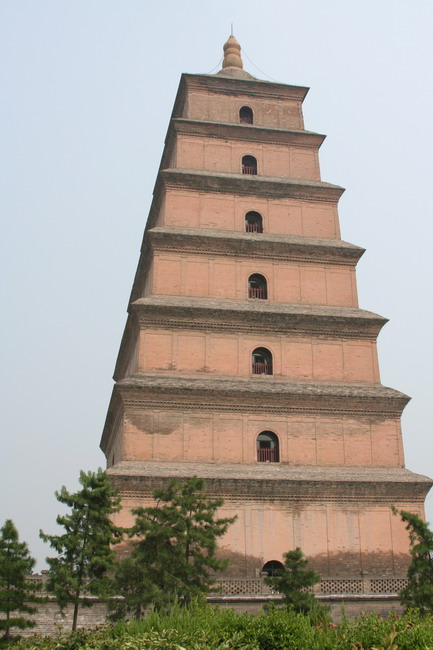
There were many interesting people also visiting the Pagoda.
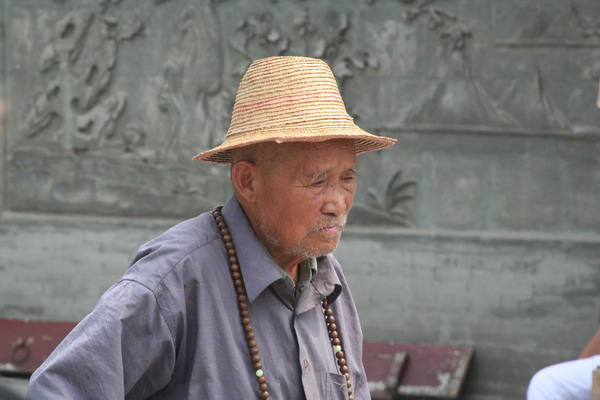
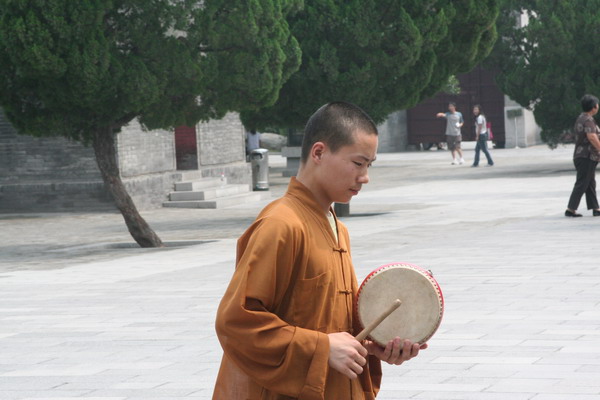
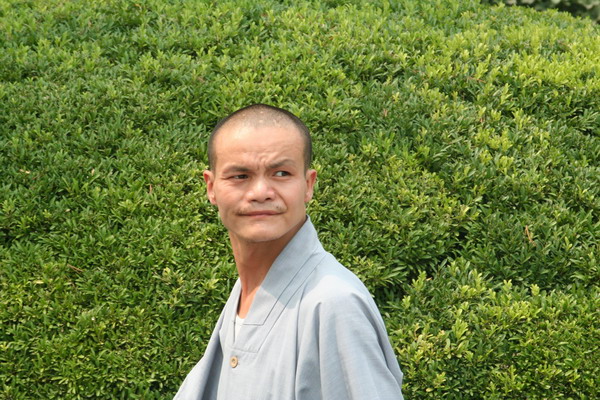
The next morning, we got up early and visited the city wall of Xi’an, which although much shorter than the Great Wall, was larger and impressive none the less.
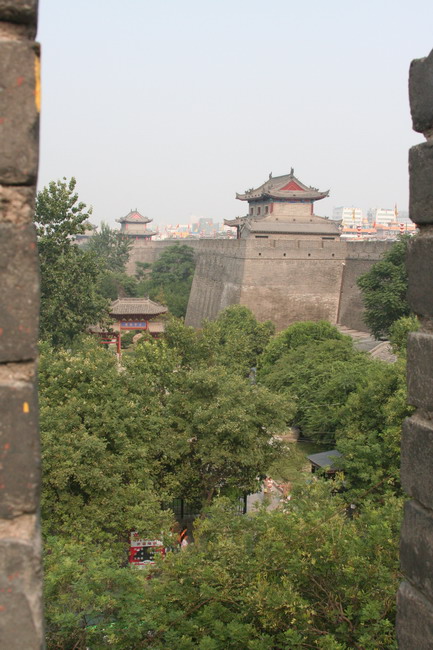
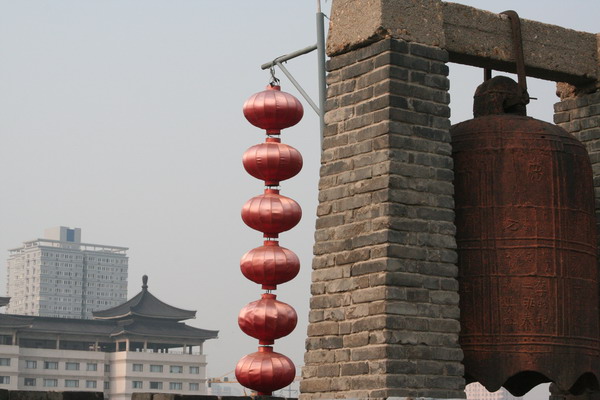

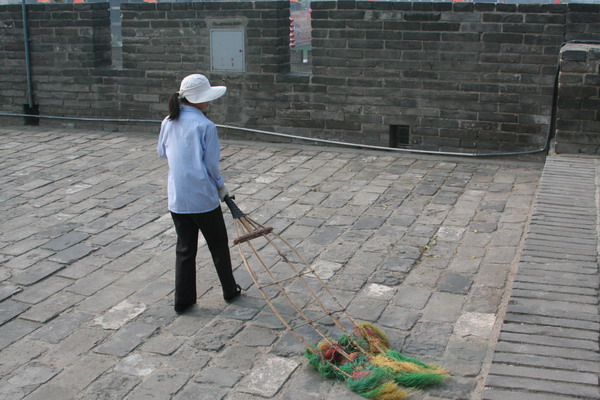
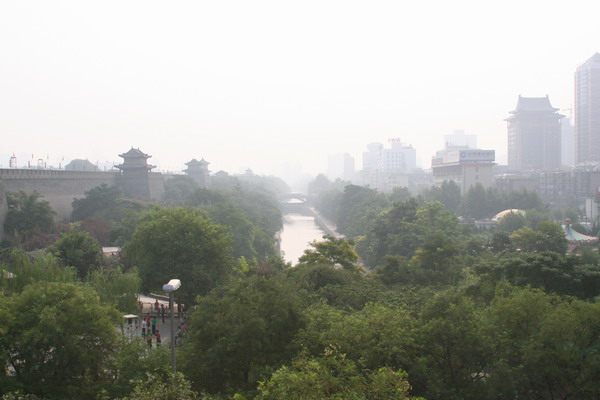
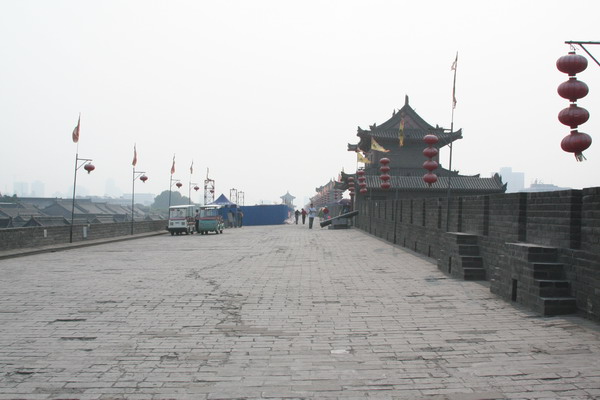
Back in the city, we found many more interesting people.
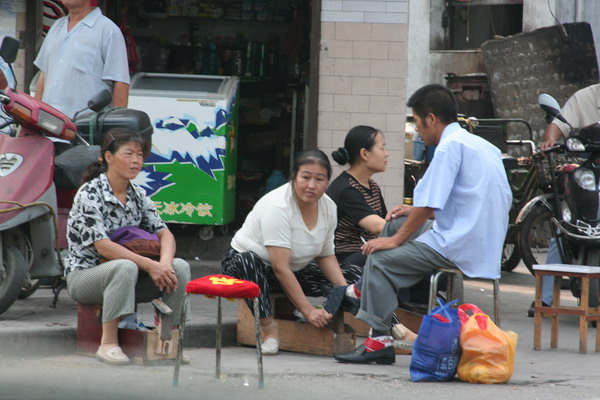
The man is demonstrating the fashion in China for men to keep cool (yes, it’s just the guys who do this … except one teenage Eurpean girl)
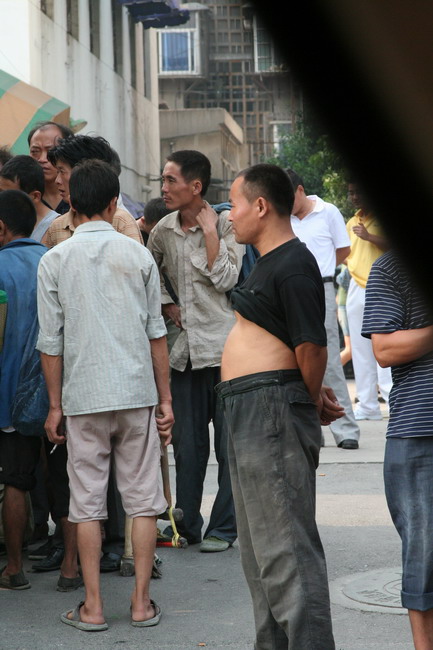
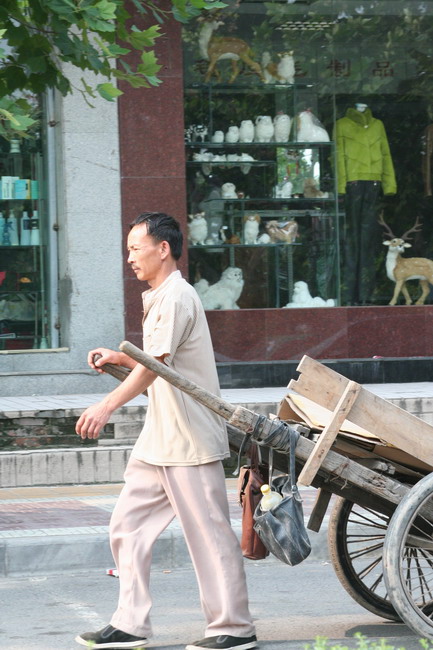
We also went to the regional history museum. It had very helpful displays that depicted the Chinese empires rise and fall through time.
This image was a taste for us of what was to come the next day. This is an actual Terra Cotta warrior from the archeological site outside the city.
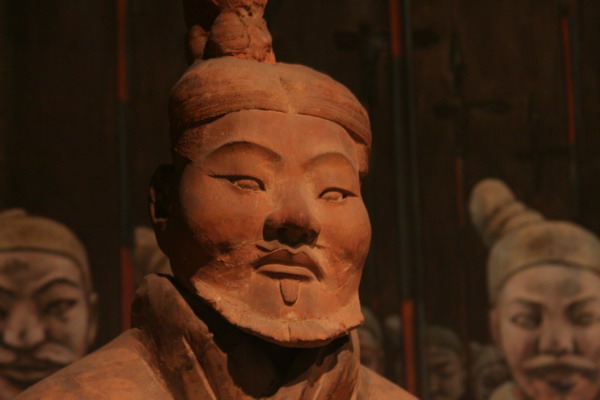
The next entry will of course will cover our tour of the magnificent Terra Cotta warrior site.
–Jim
China Part 3–Tiananmen Square (night) & Temple of Heaven
We decided to make a return trip to Tiananmen Square to see the difference the night made.
Here are some of the images.
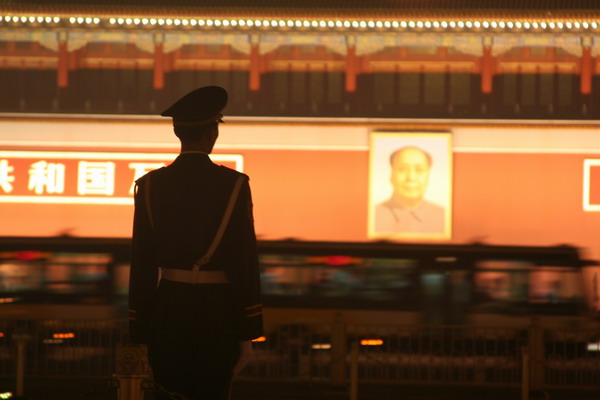
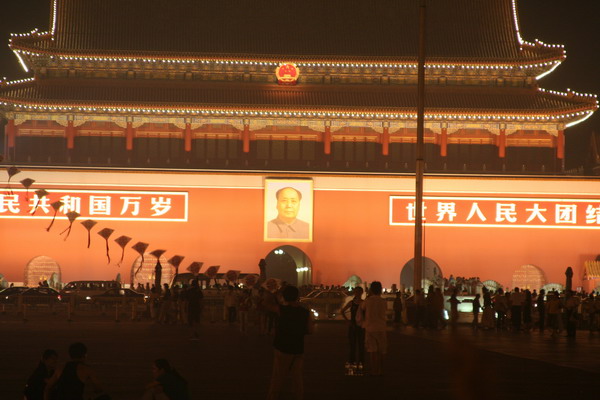
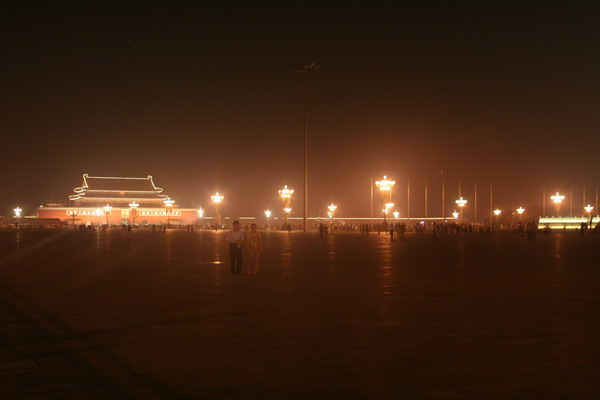
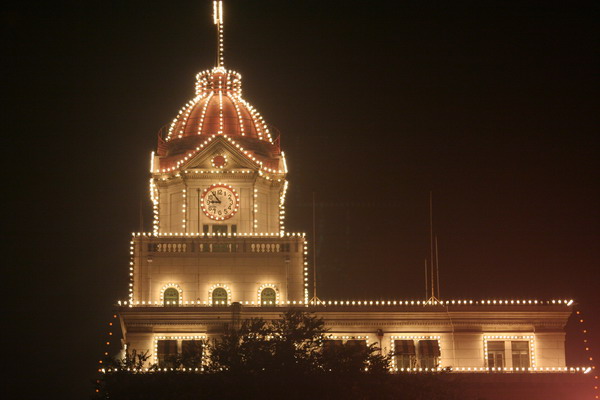

We also visited the Temple of Heaven. This very peaceful location, that is yet another example of Ming architecture, was where a large number of Chinese retirees came to relax. There were people doing all kinds of recreational activities (board games, dancing, singing, and rythmic gymnastics below).
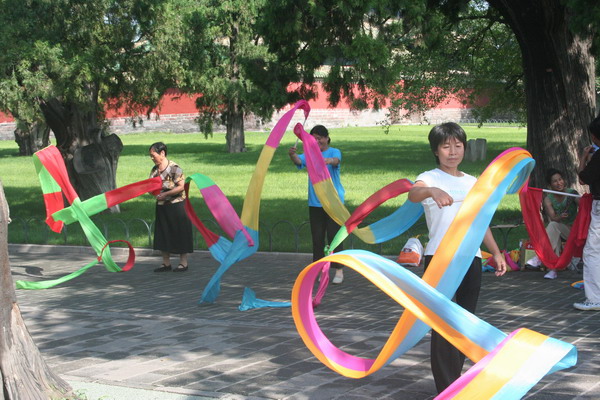
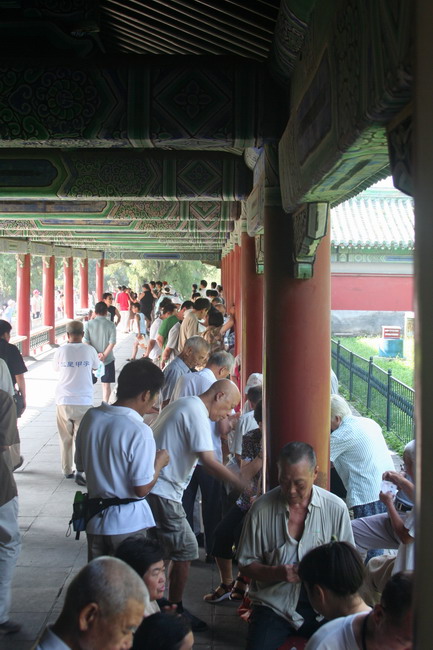
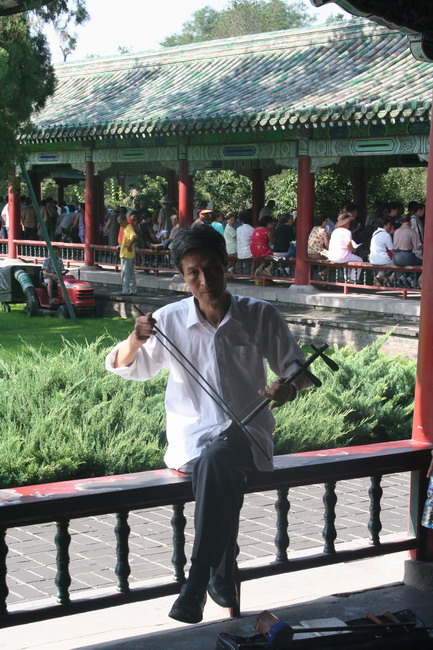
The main feature is Hall of Prayer for Good Harvests. It’s 38 meters high and the round structure symbolizes heaven, which is contrasted by the rectangular base (and walls) which are the earth.
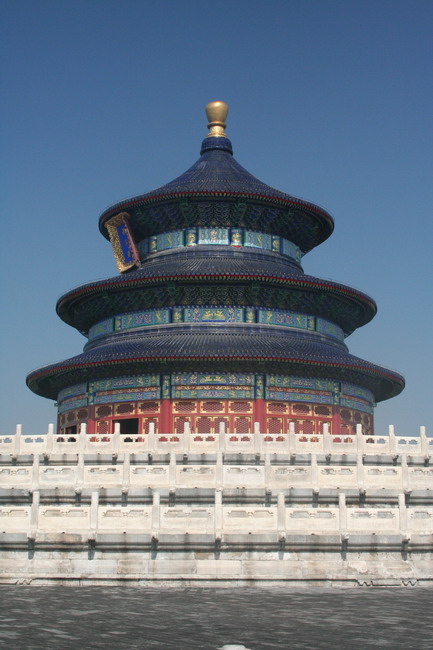

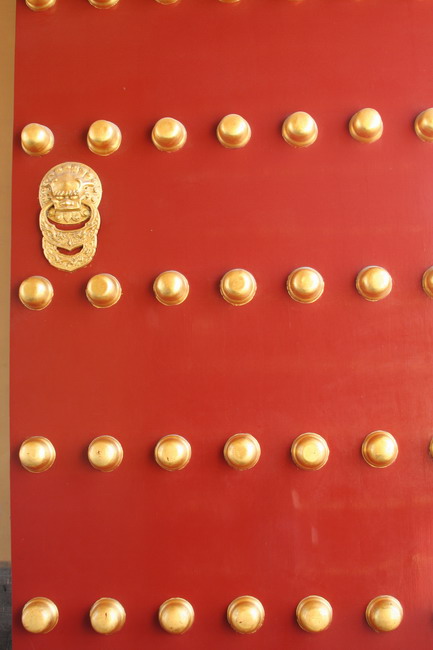
Next stop was a little cultural exploration in the form of shopping.
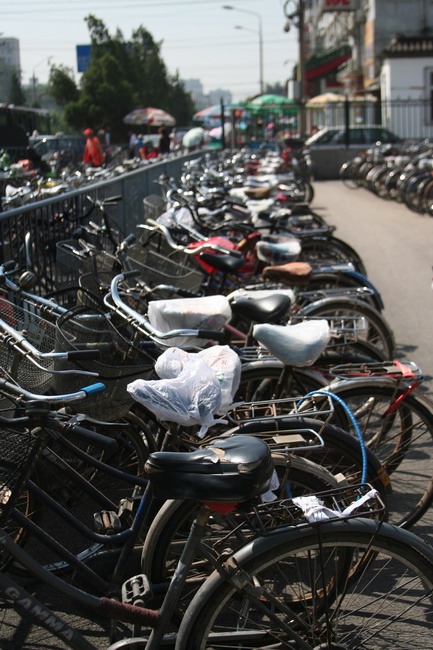
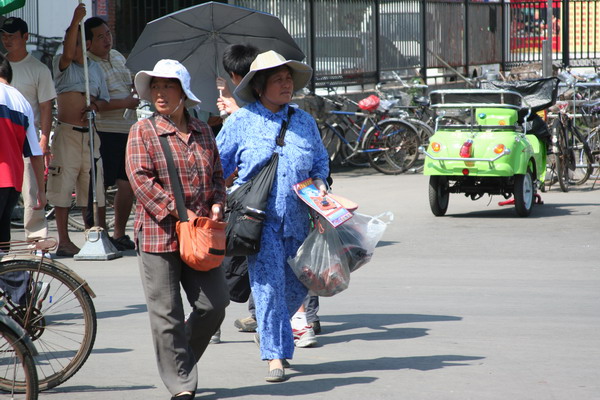
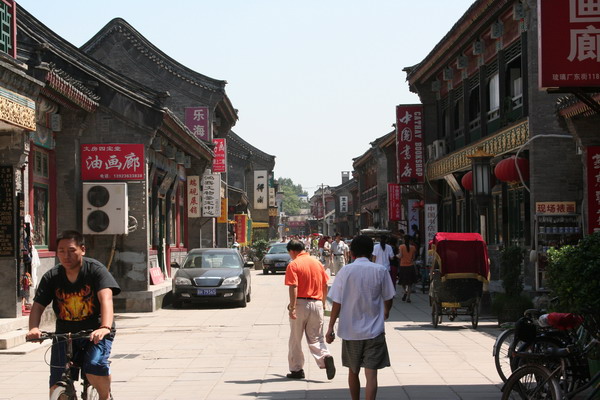
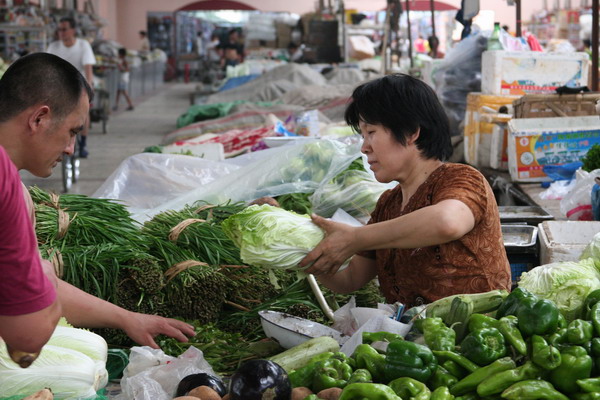

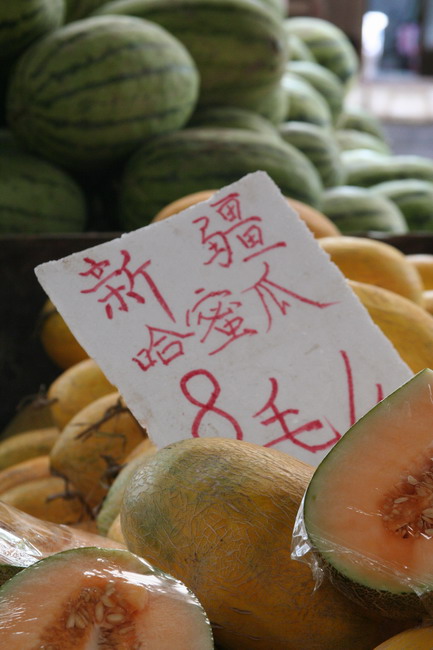
These are Dragon Fruit (Anna really liked the way they looked and their real name is Pitaya).
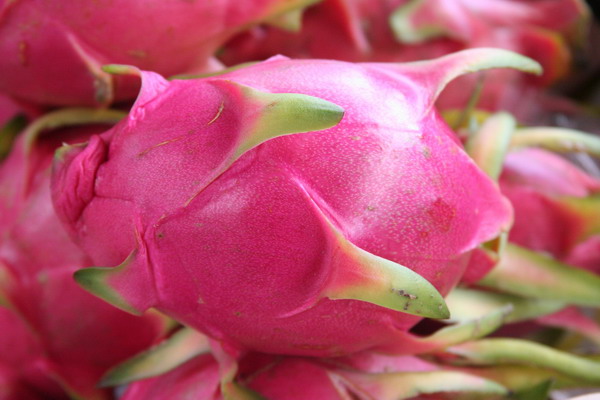
Then, there are the lychee fruits.

Another Chinese delicacy that we came to love were dumplings. Here is a group of cooks preparing them.
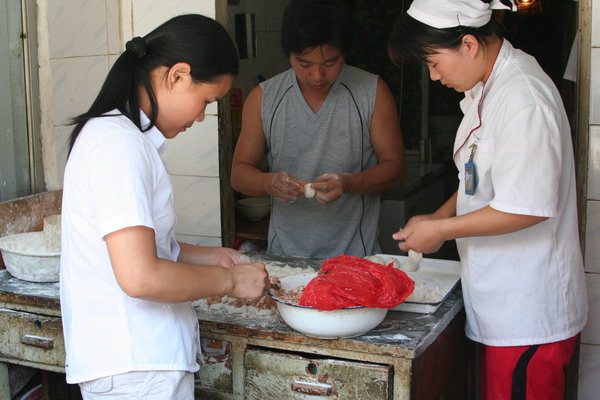
Not only did we explore on foot, we also went by pedicab. The areas we were exploring are called Hutongs (narrow alleyways). The roots of this type of urban development trace back to when Genghis Khan
laid waste to Beijing (known as Peking then). These narrow alley ways dominated zoning for the city for many centuries. However, they are rapidly being replaced by high rise apartment complexes (with much less character). Unfortunately, with the Olympic games coming to the city in 2008, the buildings there are being ruthlessly demolished by the government (with very little, if any, compensation to the owners). In fact, the atmosphere all around the country is of a headlong rush to modernize everything (oftentimes with extensive use of manual labor).
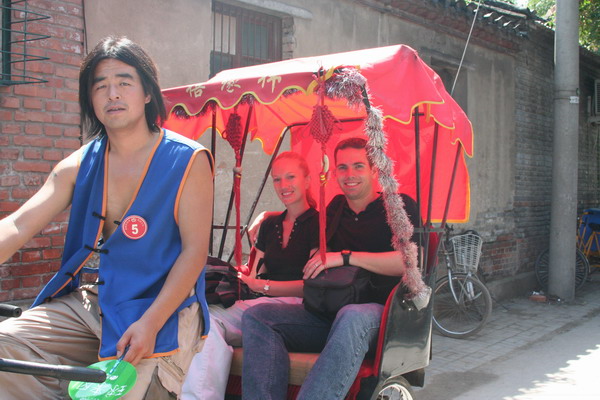
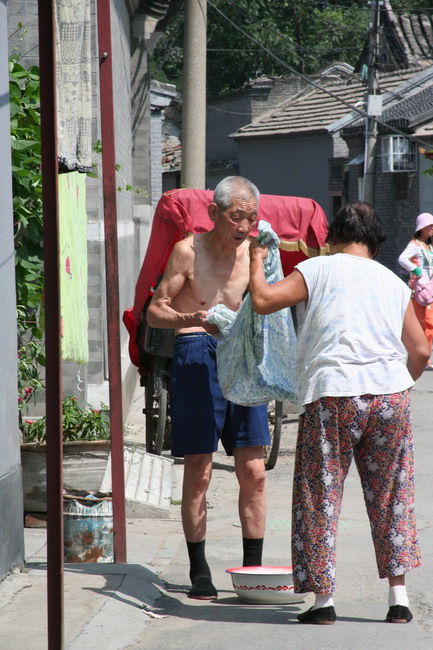
We also got a blown melted sugar sculpture of each of our birth years.
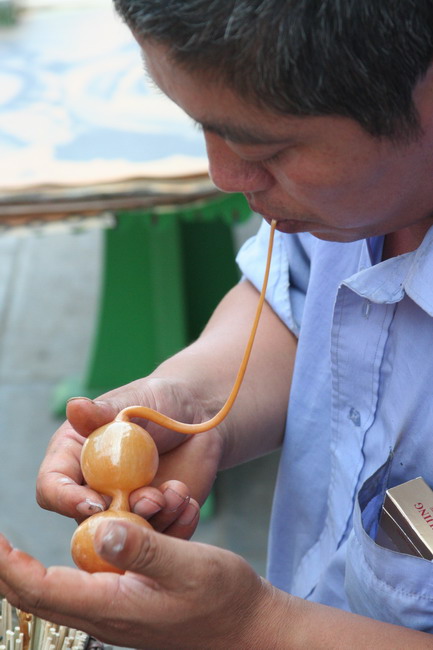
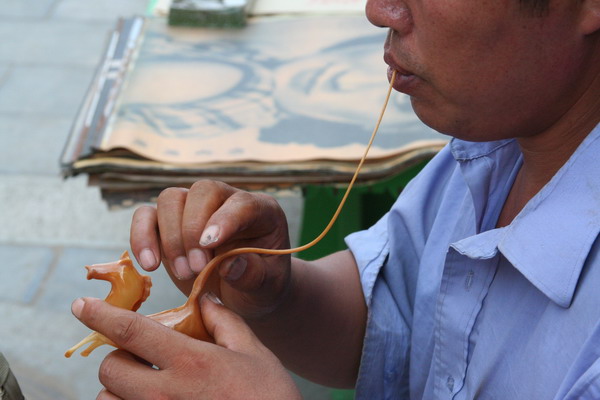
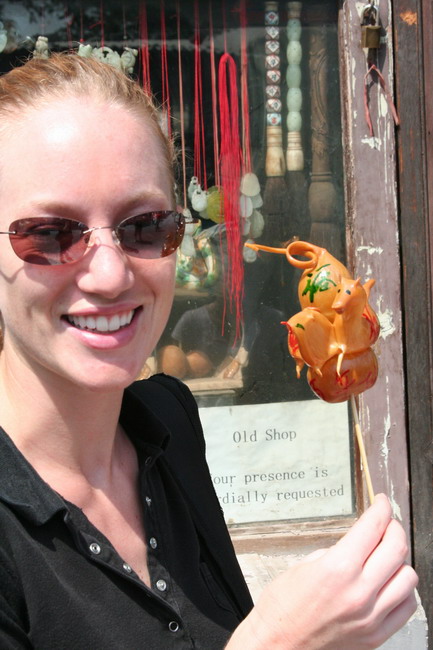
While it didn’t last long in the heat, it was fun to watch him make it.
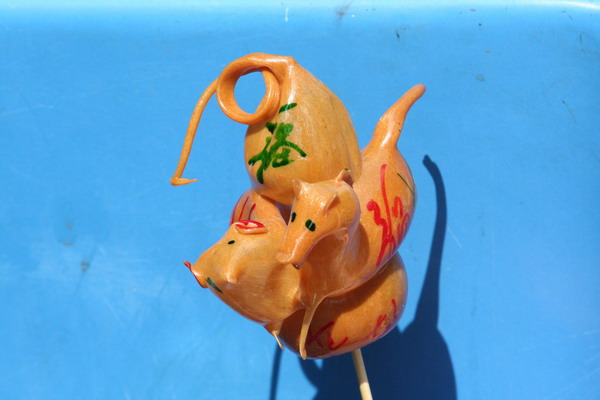
We also went to a tea shop that allowed us to sample different types of tea. Plus, they also had dried tea leaves with a chrysanthemum inside that blossomed with hot water.
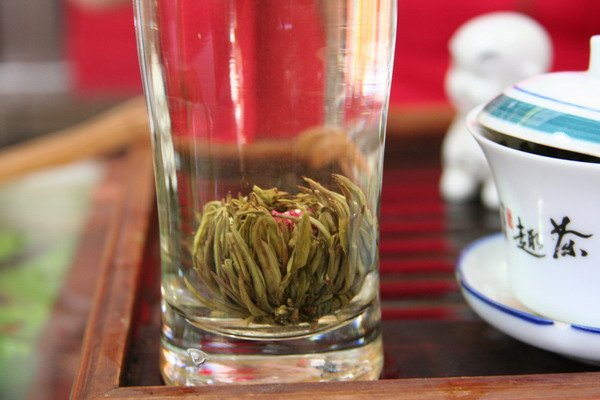
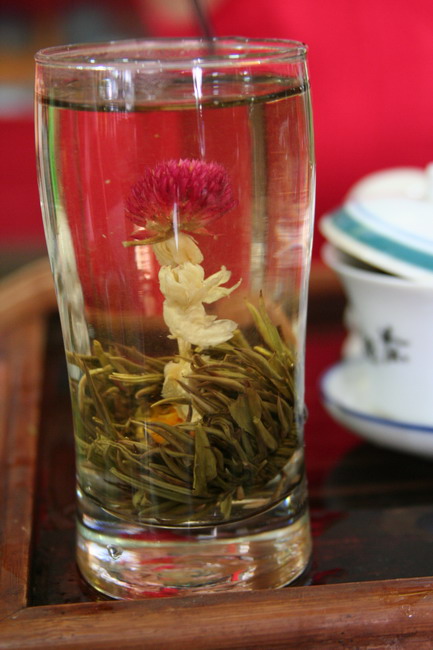
As a random picture, this is the view from our hotel.
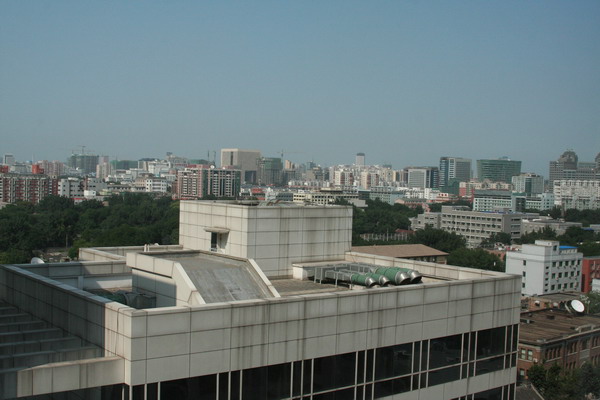
The next post will have our last pictures from Beijing and the first from Xi’an.
–Jim
China Part 2 — The Great Wall
OK, so I wasn’t able to keep up with the real time posts in China again. However, again, we have a huge number of pictures, so there will be a number of posts.
Next stop on the itinerary was one of the main reasons we went to China, to visit the Great Wall of China, truly one of the wonders of the world.
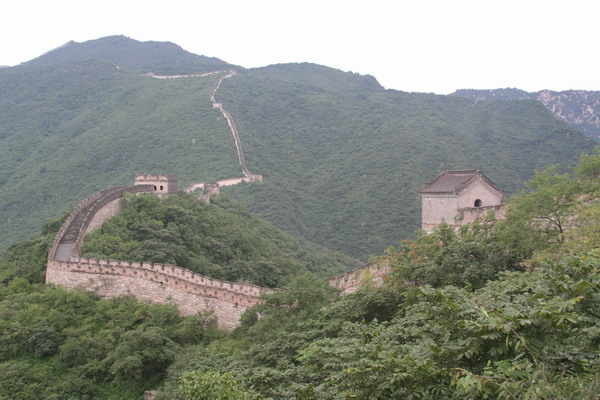
For those who don’t know much about the Great Wall (other than it’s really long wall in China). It was built and rebuilt at various times throughout history. However, it was started back in the Qin Dynasty (221-207 B.C.) when China was first unified by Emperor Qin Shi Huang, which makes the wall over 2,000 years old. They spent 10 years of forced labor and a massive human toll to build the original wall. This of course was very unpopular with the common people, since they were the ones sacrificing much and was one of the reasons that the Qin Dynasty was so short lived. However, during the Ming Dynasty (1368-1644) was when the wall took its modern form. During that time, over 100 years of effort went into making an impenetrable barrier, although it never really served as one. The idea was that at each guard house, sentries would light a fire to signal back to the capital Peking that an enemy was near (1 fire for 100 troops, 2 for 200 and 3 for 300 or more). As Gehghis Khan supposedly said, “The strength of a wall depends on the courage of those who defend it.” So, while it was never really impenetrable, it did serve a useful purpose of a convenient path to cross rough mountian terrain. Unfortunately, after the Ming Dynasty, the wall was largely forgotten and sections turned back into dust. Had not the tourism market resurrected it in the 20th century, the whole thing may have disappeared entirely. Now, there are several sections that have been restored to their original condition, as well as some that are in their more natural state. The place we chose to visit was called Mutianyu. It is a section 90 km northwest of Beijing and is about 2.5 km long. It was first built during the Northern Dynasties (386-581), but rebuilt during the Ming Dynasty. This section is between 7 and 8 meters high and 4-5 meters wide at the top.
Ok, enough description, here are our pictures of the Great Wall of China.
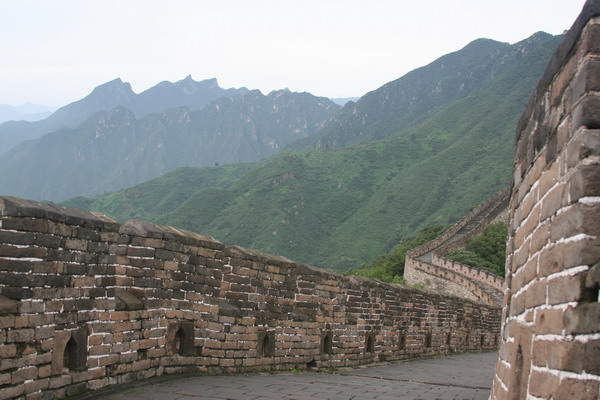
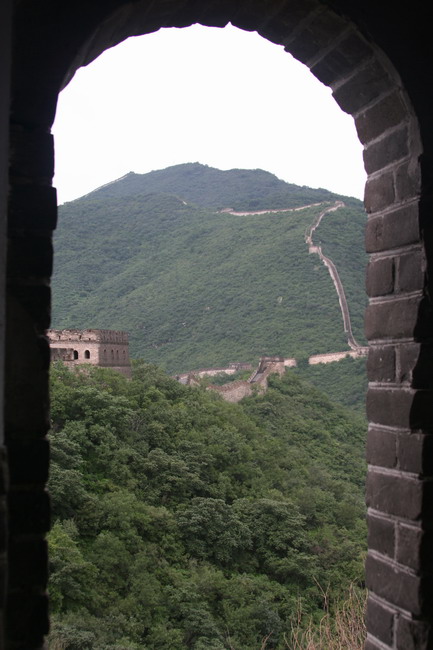
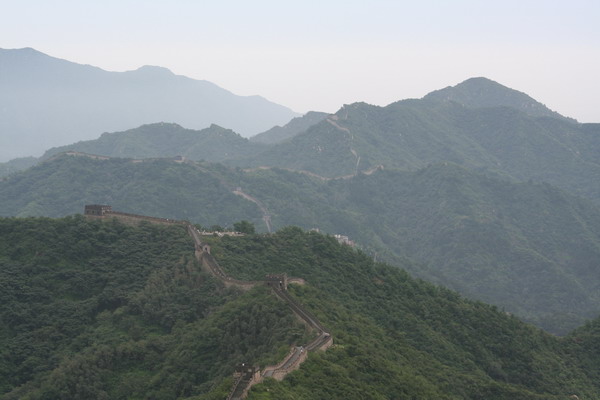
At the end of the wall, there was a rampart at the top of 400 stairs that offered a commanding and serene view of the surrounding area. Anna found this perch a very agreeable spot to watch the few other tourists climb the wall.
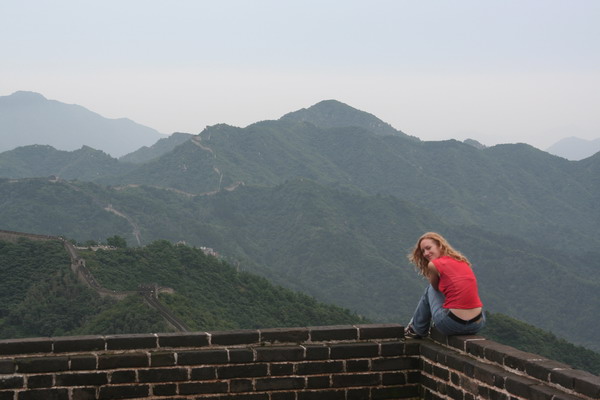
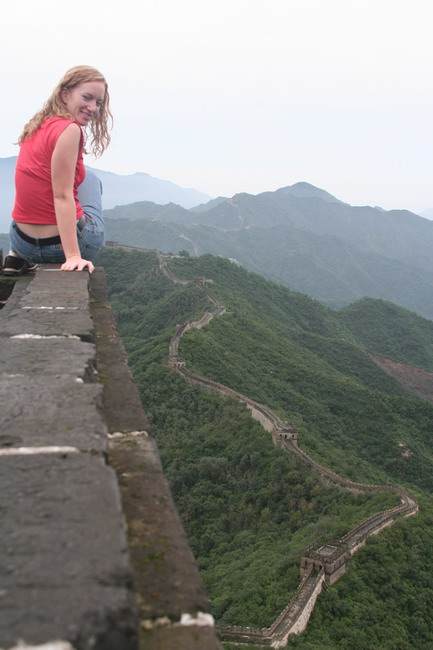
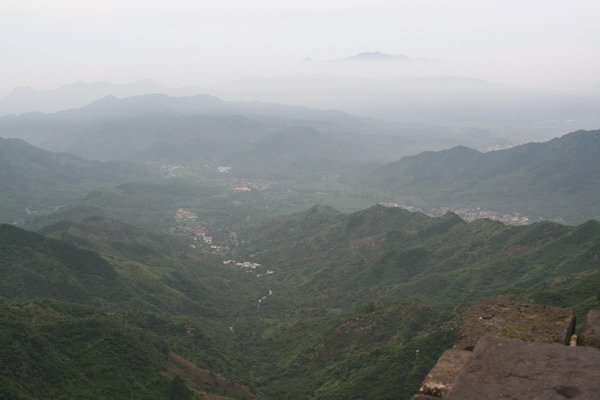
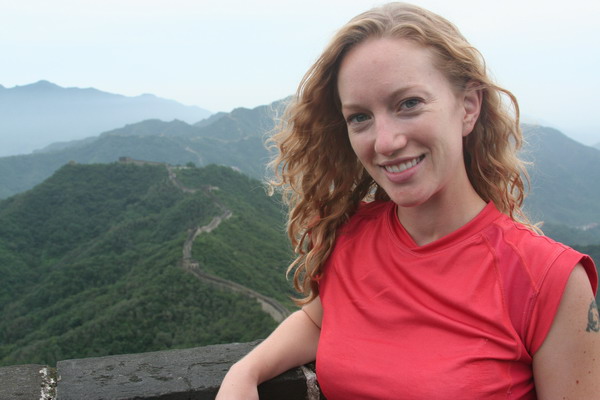
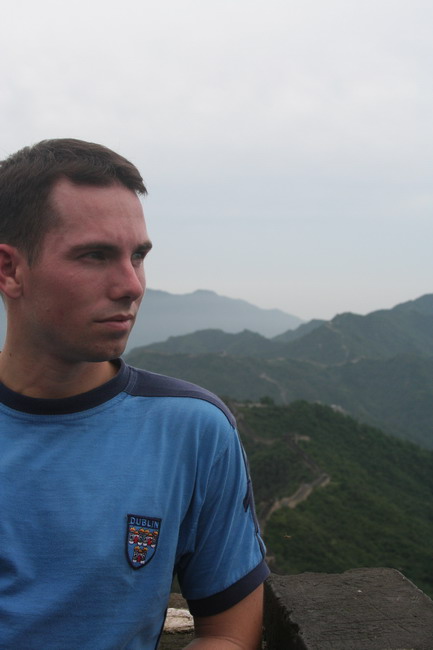
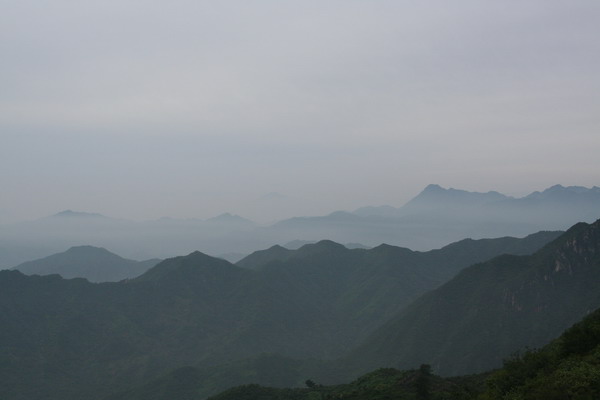
As you can see, after centuries of neglect, the wall has deteriorated quite significantly.
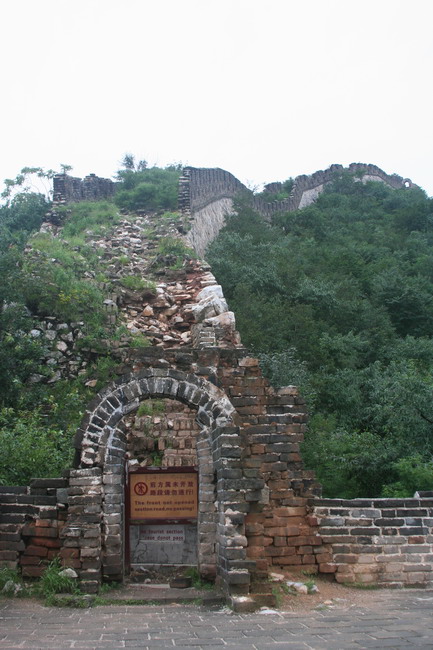
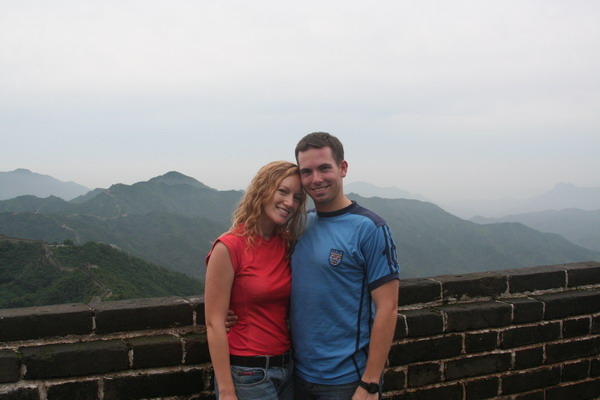
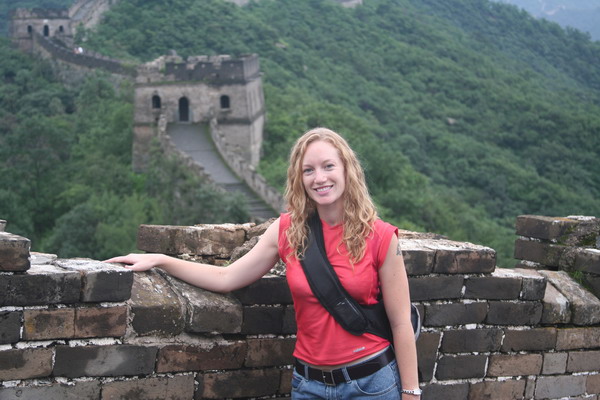
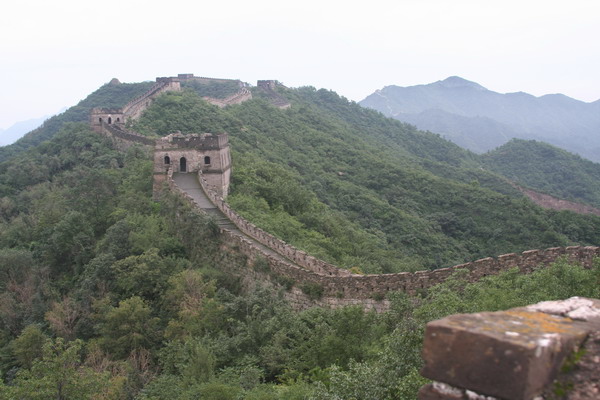
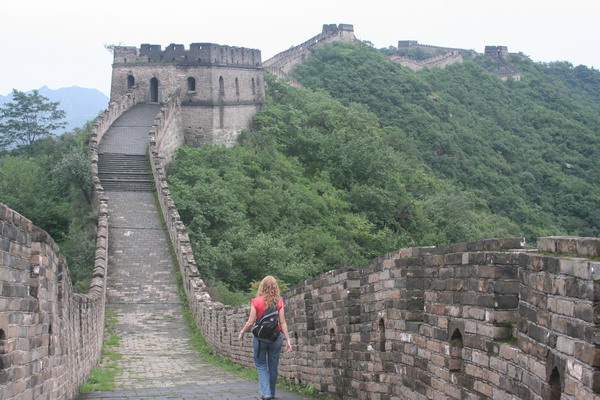
You can see one of the guard towers here.

There was even one hardy vendor who was willing to bring snacks and drinks up the mountain to hungry and thirsty tourists (with a little help from his friends here). Amazingly, the price was about the same as other places much further down.
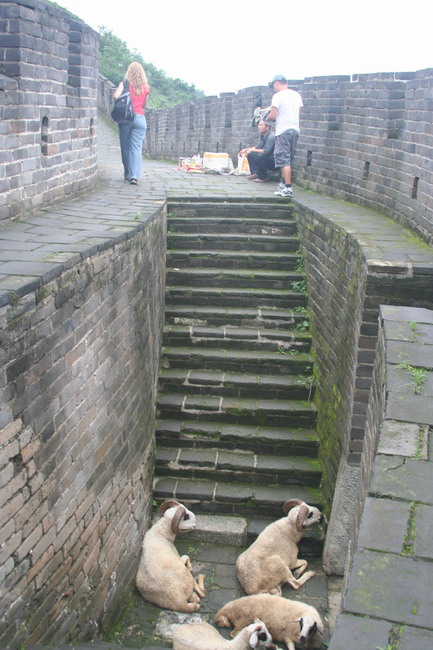
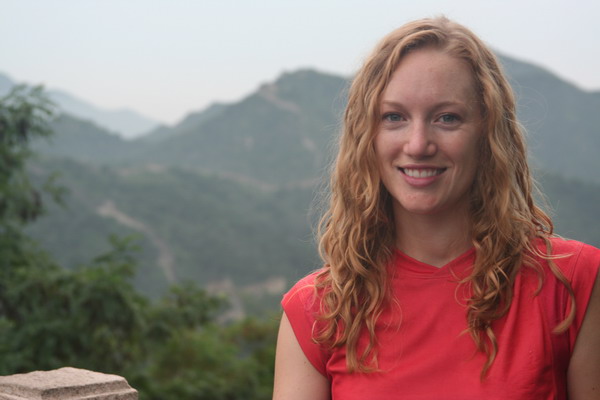
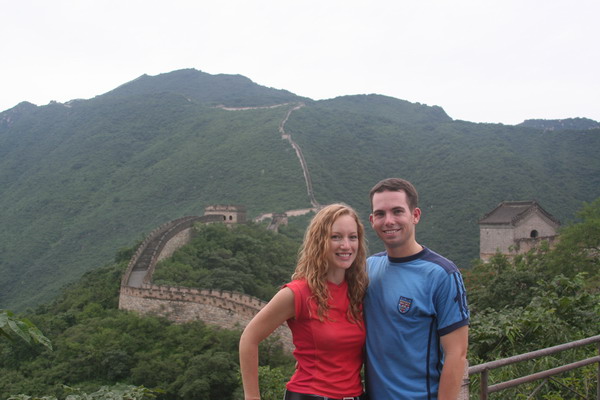
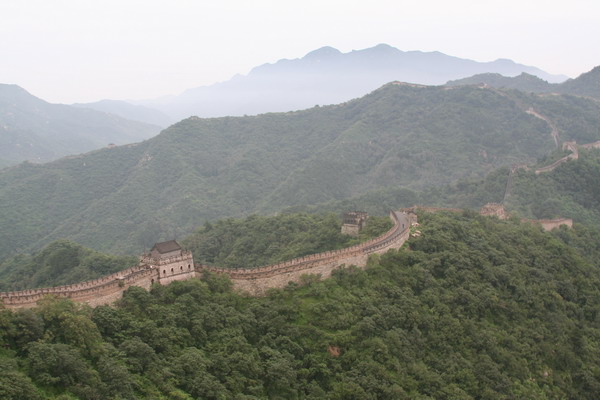
After we finished exploring the wall (although we could have easily stayed and explored a couple more sections), our guide and driver were ready to take us to our next location. Let me take a couple sentences to say just how nice it was to have a personal escort throughout our time in China. Normally, as you probably figured out by now, we like to blaze our own trail and explore on our own. However, in China we decided to use a personal guide and driver. It made things so much easier. Between our everpresent Lonely Planet guidebook (which is our favorite travel companion) and our guide, every question we had was answered. 🙂 Plus, a driver was there to drop us off as close as possible and wisk us away when we finished.
Here they are, ready to head back to Beijing.
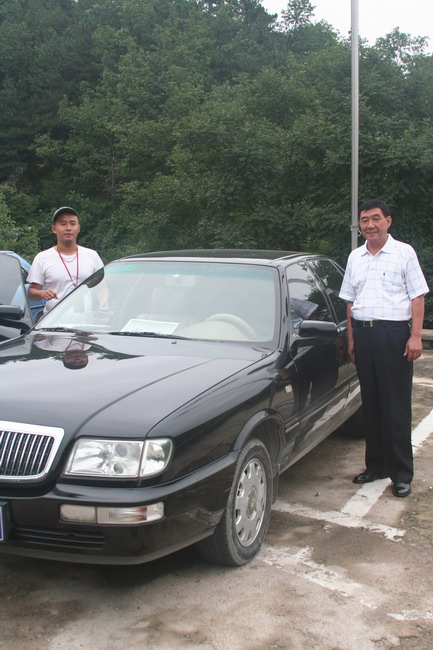
While China is certainly still a third world country, it has a couple unique traffic features. While not unique to China, they are certainly interesting to note (and not a bad idea for the US as well).
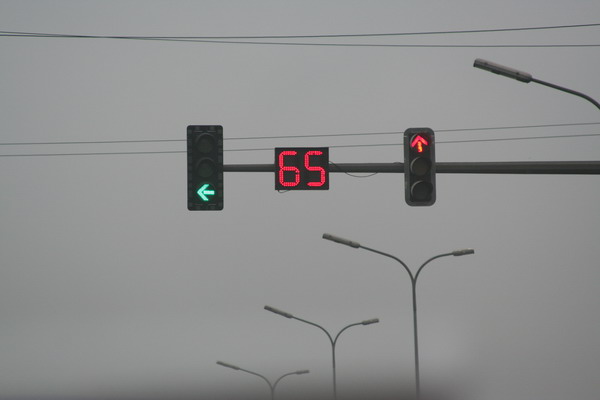
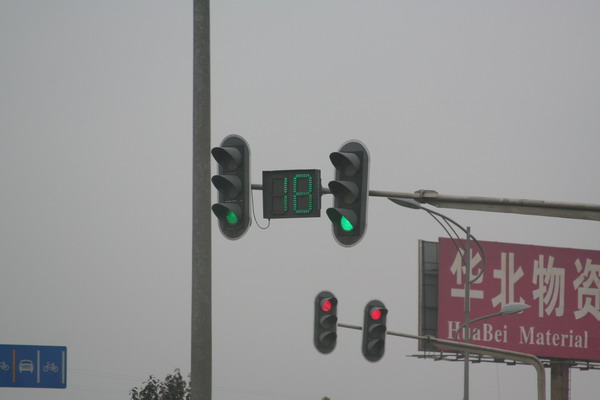
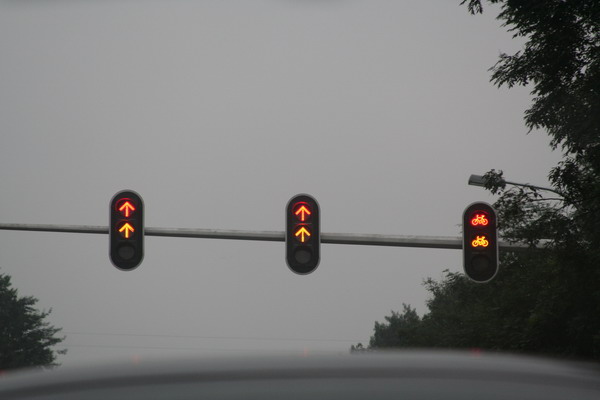
We also stopped by the Ming Tombs. This is the final resting place for 13 of the 16 Ming Dynasty Emperors. It had a very serene Sacred Road that led to the tomb.
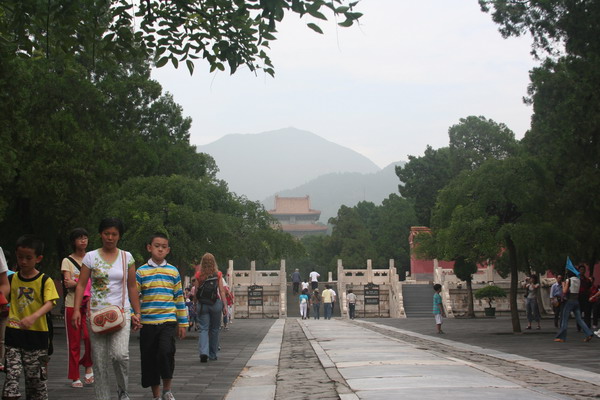
However, perhaps one of the most interesting parts of the tour was a trip into Dingling. It’s the underground tomb of Emperor Wanli. You can see from this picture that people liked to throw money on his throne.
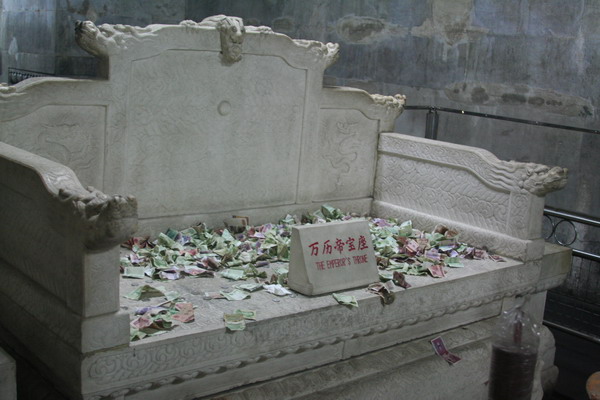
However, apparently, people didn’t feel the same way about his wife…
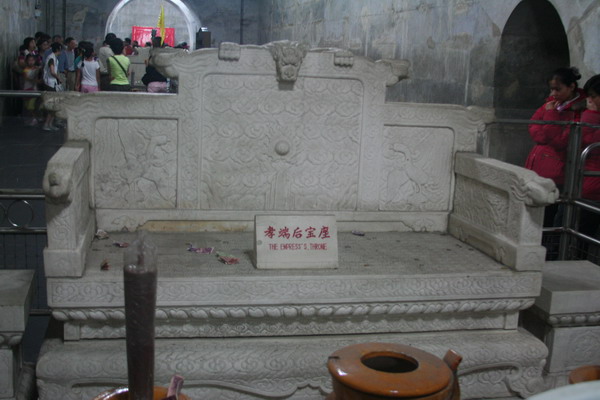
This is an interesting perspective looking back into the burial chambers.

After dinner, we came outside to this beautiful full rainbow.
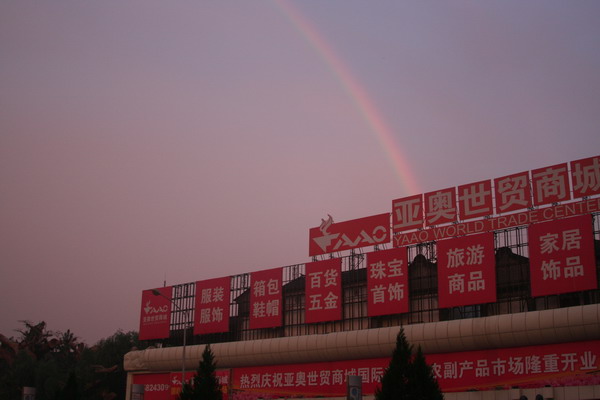
The Great Wall was without question our favorite site to see in China. So, this was an outstanding day. 🙂
Not to worry, there will be several other posts of our China adventures.
–Jim
China Part 1 — Tiananmen Square, Forbidden City and Summer Palace
Yesterday we began our voyage into mainland China. However, it wasn’t until today until we began our exploration in earnest.
The first stop on our itinerary was the infamous Tiananmen Square. This of course was the site of the massive 1989 pro-democracy demonstration, where tanks were seen rolling in against student protestors. It is fitting that because the revolutionary Chinese leader, Chairman Mao Zedong, conceived the idea of the square, was also where one million Chinese paid their final respects to him in 1976.
Tiananmen Square is perhaps the symbolic center of China. This is evidenced by the mausoleum on one side that contains the remains of Chairman Mao. In fact, it has both a wax likeness and his actual body entombed in formaldahyde. As we passed the entrance in the morning, our guide informed us that Chinese people make it a ritual to visit and pay their respects every (or at lease many) mornings. Also, there is a “meridian” that runs directly through the middle of the square.
In addition, there’s a large monument in the middle of the square, called the Monument to the People’s Heros. This was completed in 1958, it’s about 40m high, and bears the inscription “Eternal Glory to the People’s Heros.”
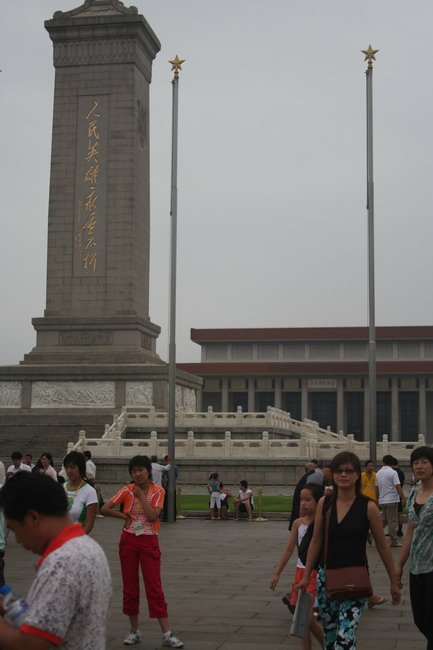
On the other side, there is the Great Hall of the People. Here’s an image of it.
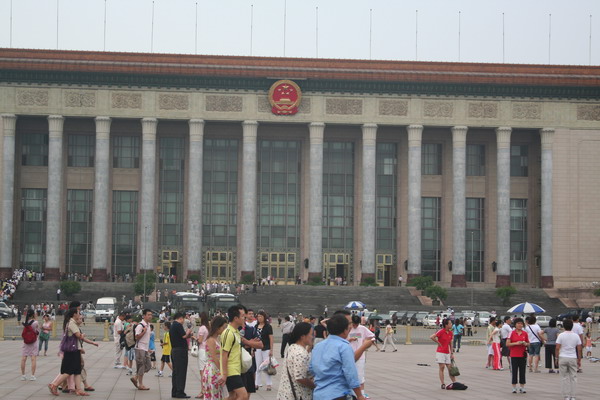
Here is the National Grand Theater, which advertises that the Olympic Games are coming to the capital city. In fact, there are several large clocks in the city that count down how much time is remaining (as of today, it was 725 days…).
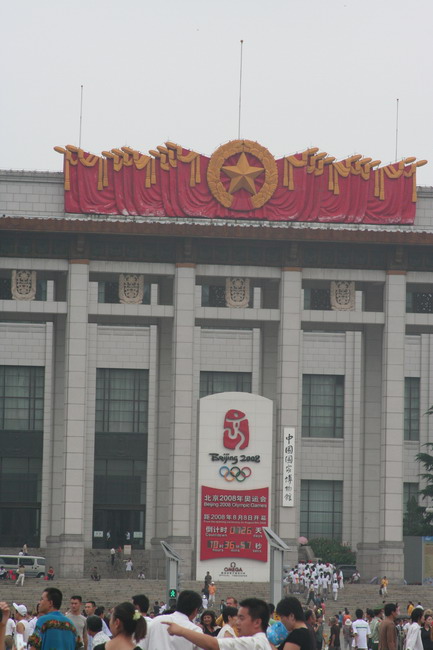
Looking over the throngs of people, you can see the Gate of Heavenly Peace. This was built in the 15th century (and restored in the 17th), and serves as the main gate for the Imperial Wall that encases the Forbidden City within. Also, it was from here that Chairman Mao proclaimed the People’s Republic of China on 1 October 1949. You can see his portrait is the main feature of the gate. The inscription on either side reads, “Long Live the People’s Republic” on the left and “Long Live the Unity of the People’s of the World” on the right. An interesting side note is that the painting was pelted with paint filled eggs during the 1989 demonstration.
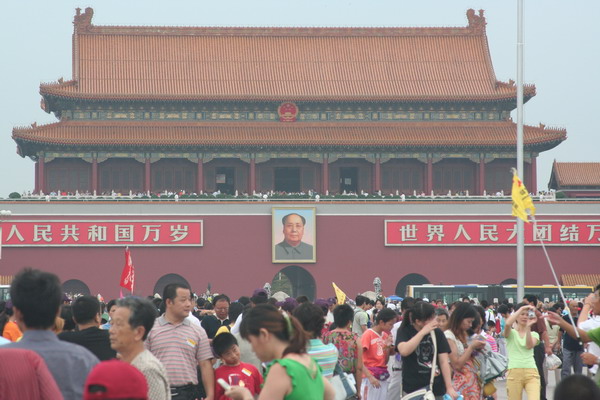
Government service is compulsory in China for 4 years. You can determine what branch these officials are in by the color of their uniform. Green is the military, blue for police, and gray for security.
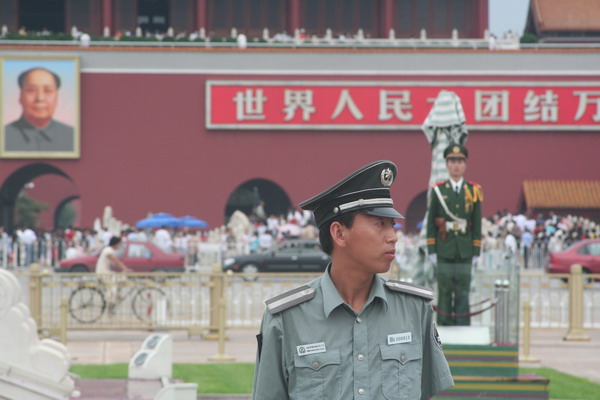
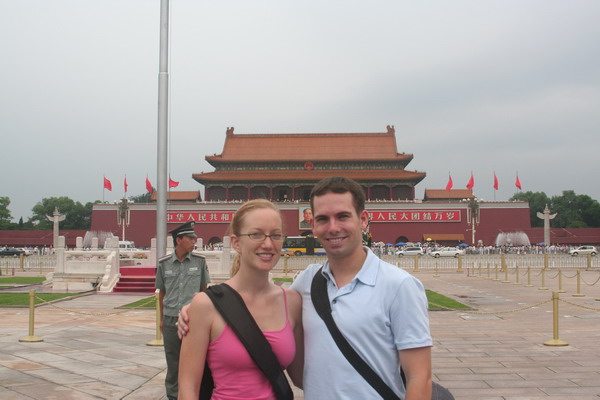
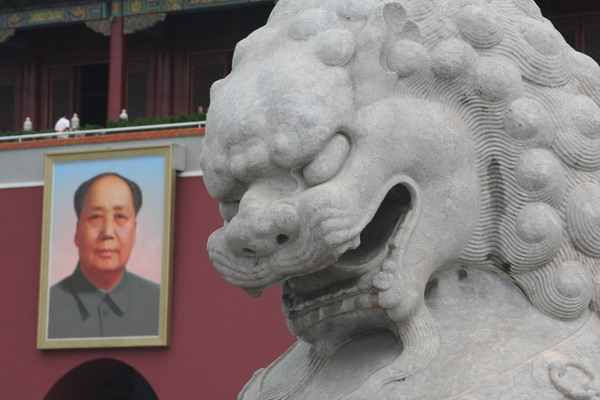
Inside the front gate of the Forbidden City (there are actually nine gates separating the inner city, with the outer). In fact, the number nine has special significance. It is viewed as the perfect number. It’s the largest single decimal number, and has spiritual importance.
The Forbidden City is so called because it was off limits to the common people for 500 years. It is the largest cluster of ancient buildings in China. It was home to the Ming and Qing dynasties. Some of the imperial family may have never left the compund. If they did venture out, it was only when absolutely neccessary, and proceeded by a large entourage and accompanied by a loud bell to signify that they were about to depart the inner city. You can see people re-enacting royalty with the yellow robes.
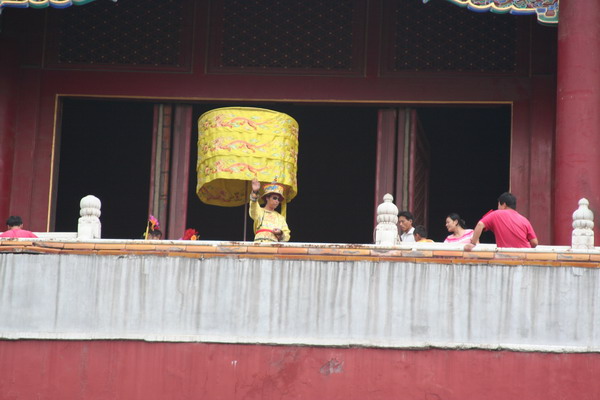
More soldiers…
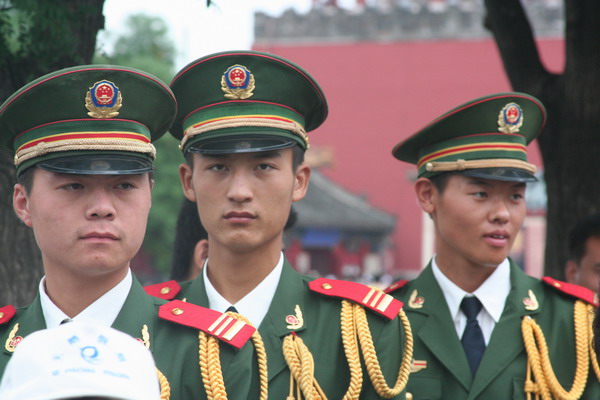
Another gate as we passed further into the Forbidden City. People seemed to have an affinity to touch certain items (like these brass knobs on the gate).
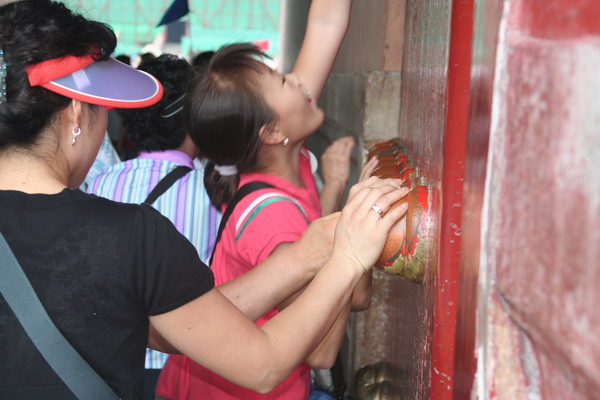
Here you can see the intricate painting on the steeples of the palace.
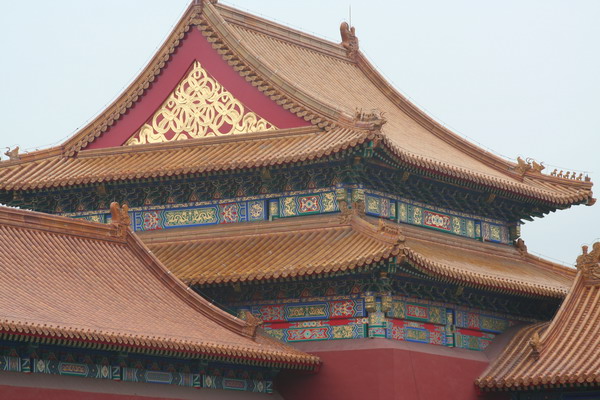

Here is one of the many thrones for the emperor. This one was for last minute preparations before he went out to the outer city.
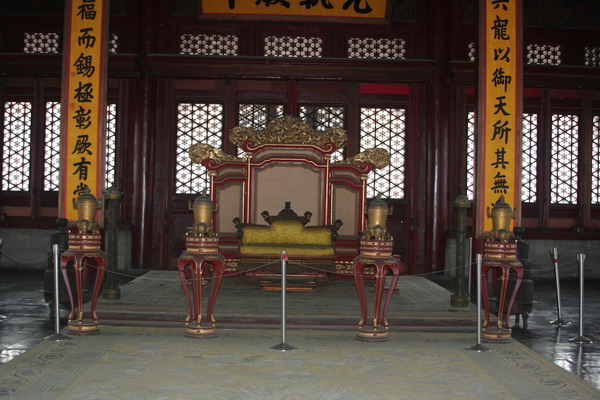
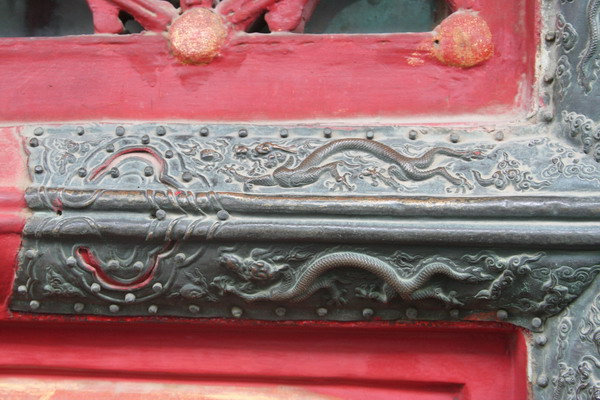
These kids are holding the side of a large container that held water to extinguish any fires that flared up in the city.
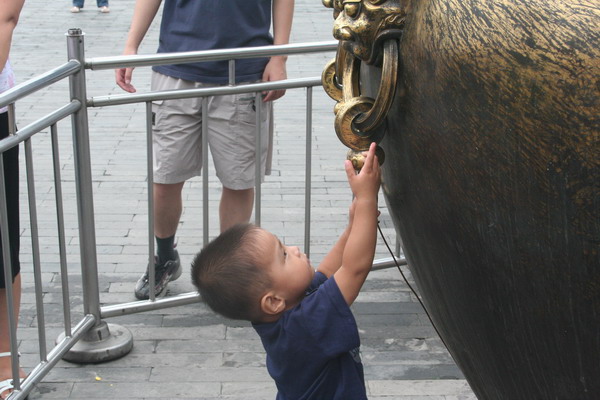
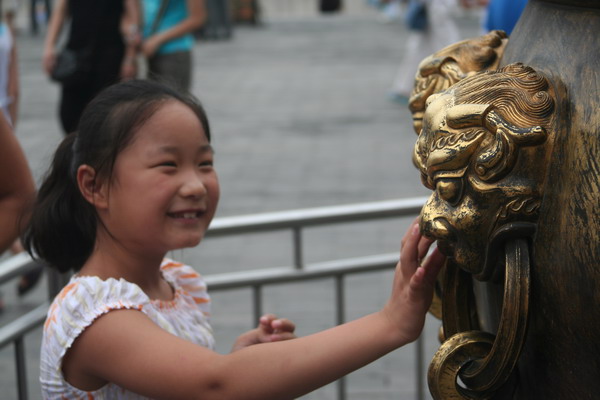
There are many real and symbolic guards to the city…
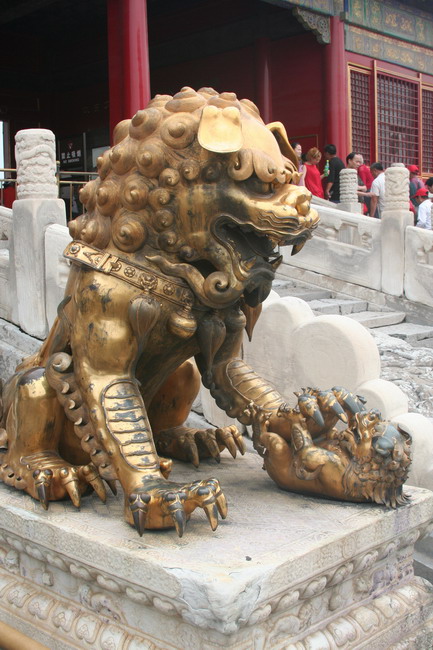
Here is the main throne for the emperor. As you can see it is quite imposing, although rather austere.
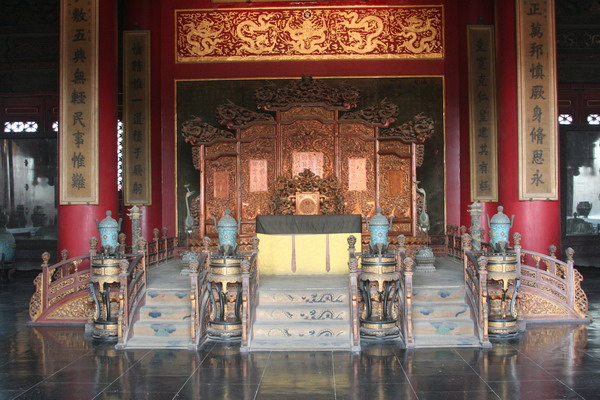
Animals on the roof … you’ll note there are 9 of them…
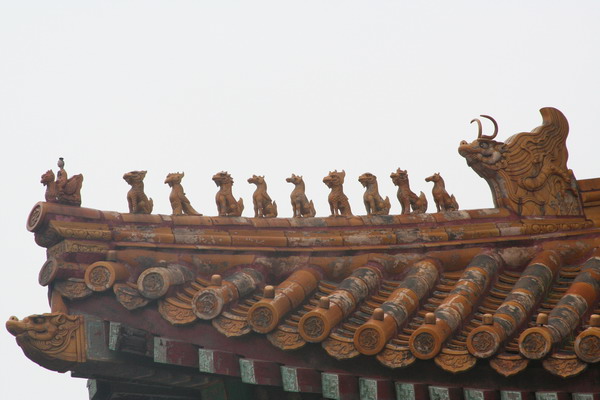
The Love Tree. It begins as 2 individual trees, but grows together as one.
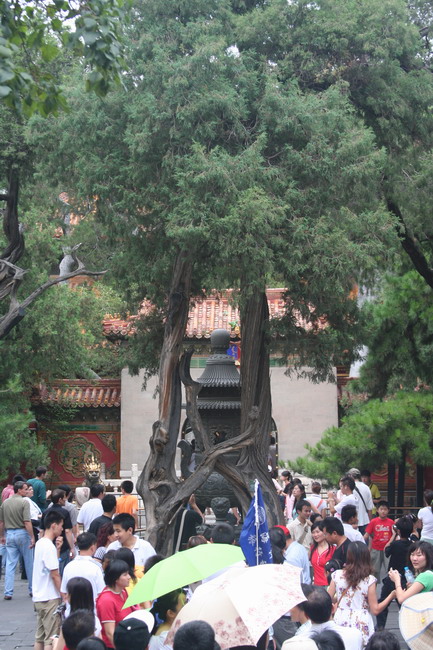
Here is a view of the wall that surrounds the city. Anna liked that the mortar was made with egg whites and rice water.
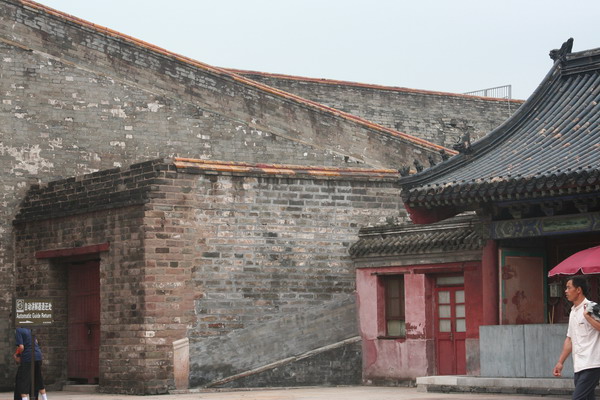
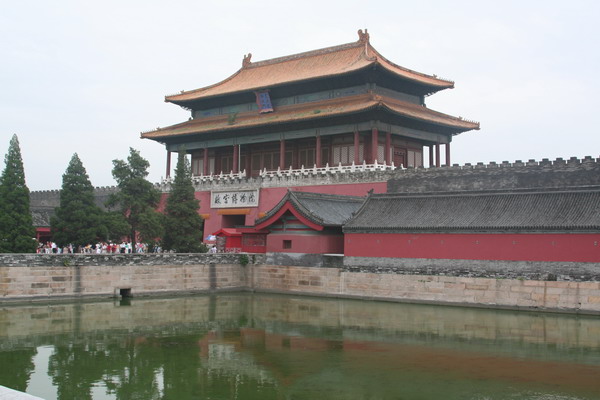
From the Forbidden City, we traveled to the Summer Palace. It was the place where royalty came to escape the furnace like heat of Beijing in the summer.
Here you can see Kunming Lake, which was deepend to about 7 meters and expanded with the help of about 100,000 labourers in the 18th century.
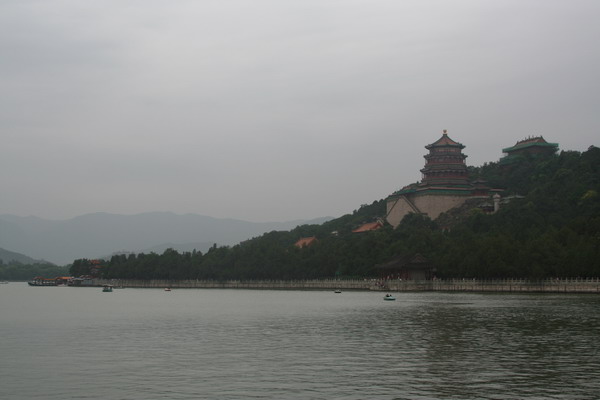
The trees are even labeled according to their age. This one idicates that it’s over 300 years old. I suppose that’s the benefit of having someone living in the same place for thousands of years, keeping records of everything that happens. 🙂
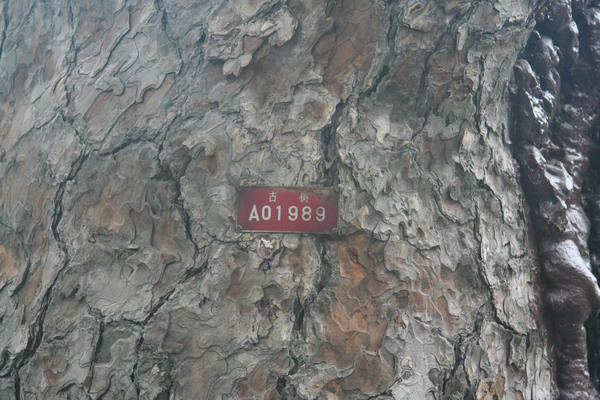
Anna exploring the halls…
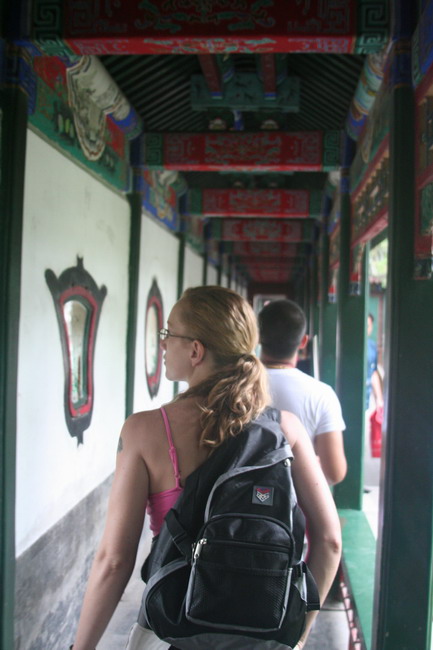
Note how many archways lead to the middle of this bridge.
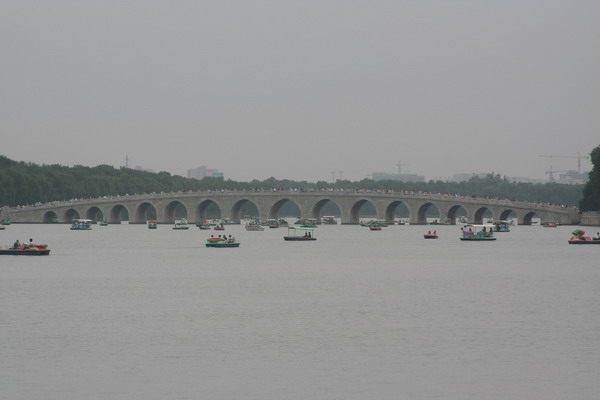
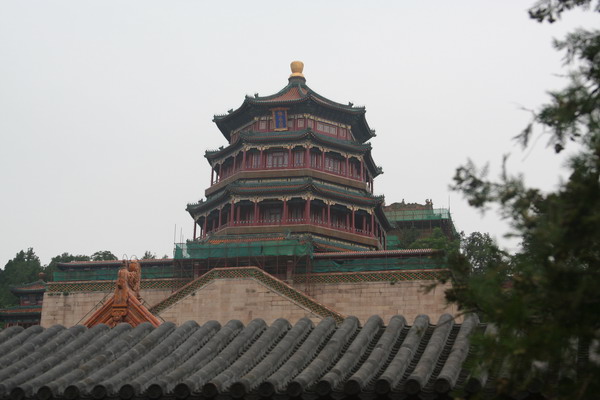
More guards…
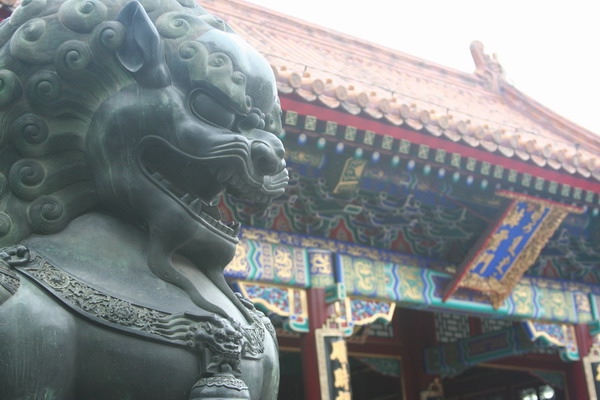
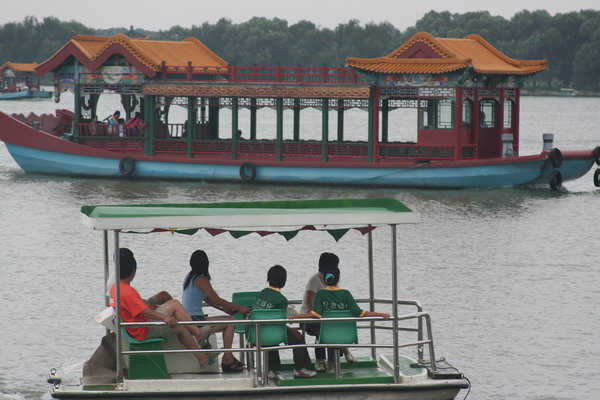
In 1888 the Empress Dowager Cixi used money earmarked for a modern Navy and used it refit buildings damaged in the Second Opium War of 1860. This is the only nautical device she had built. Although quite beautiful, the marble construction doesn’t make it the most sea worthy vessel around.
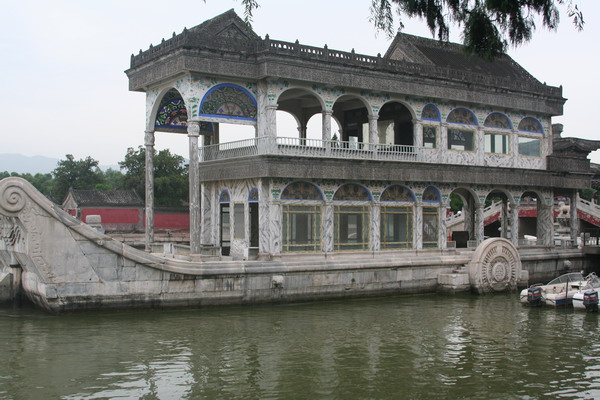
We ended our first day with a Kung Fu show. It was a spectacular display of form, precision, athleticism, and drama (as it was told in the form of a story). The experience was quite enjoyable.
That brought day one to a close. Day 2 holds the Great Wall, the Sacred Road, and the underground palace of Dingling. Dinner tonight will be the signature dish of Beijing, Peking Duck. Yum. I promise, you will hear all about it soon.
Until then…
–Jim
Pagat Cave and Cliff
This afternoon, we had the pleasure of joining Dennis and Amanda for her first “real” hike on Guam. Amanda said she wanted to go on a hard hike. So … we decided on Pagat Cave and Cliff (which you may recall from a post last year).
In fact here she is now (she did really well, considering this was her first true foray into the jungles of Guam).
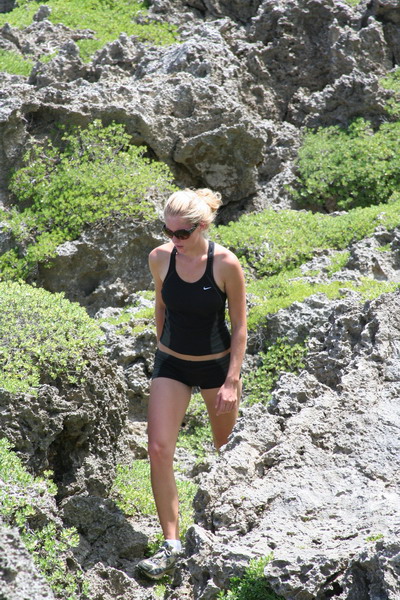
The hike meanders through the jungle for a while, past the cave and out to the ocean. We then headed north and made our way to the natural bridge. Once we arrived, the water had a little surge, but nothing too dangerous. Here’s what the area looks like.
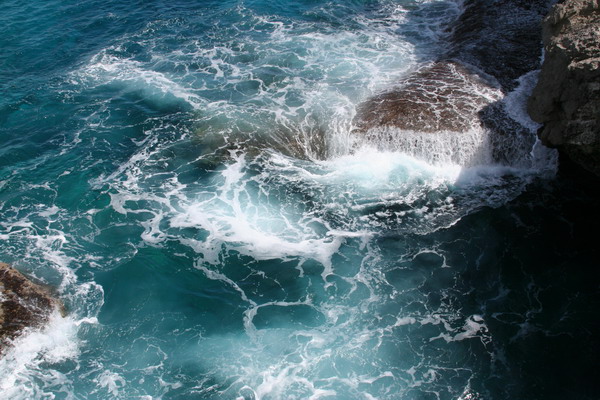
So, we decided to get in the water … off the cliff. 🙂 Don’t worry; there was a pretty easy (and safe) way to get out of the water. Just swim over to one of the ledges and wait for the water to raise you up, and then just step out. In fact, here’s Dennis doing just that.
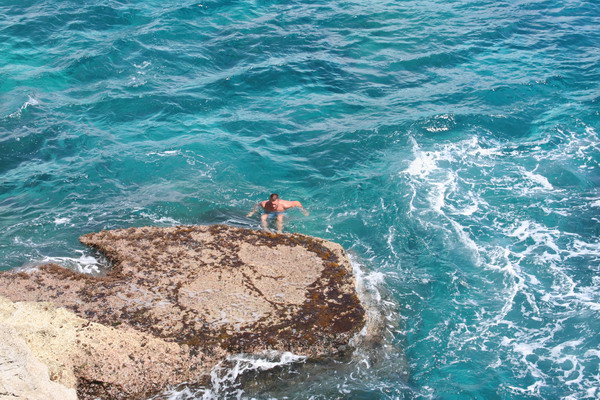
Last time, I took all my pictures from above looking down. This time, I decided to get down on that ledge and take some pictures. This is what the perspective is from down there.
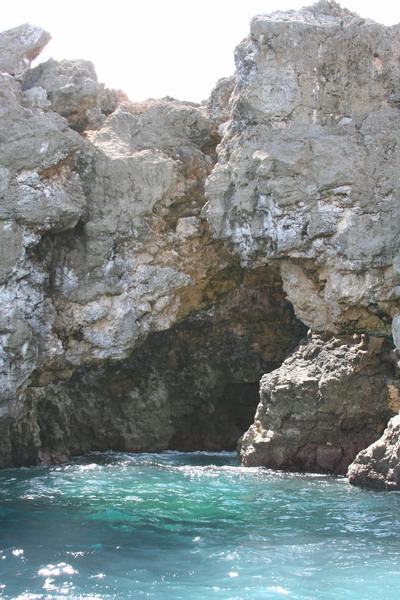
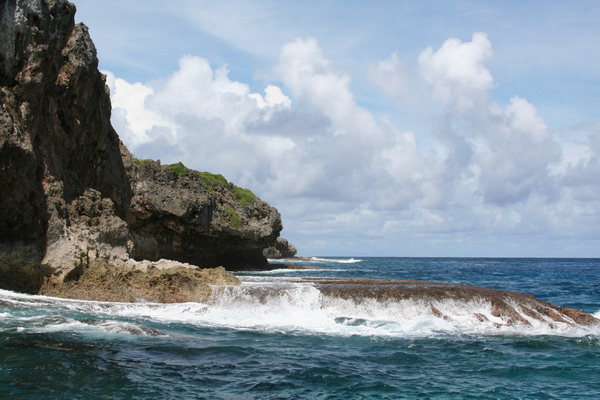
I caught Dennis in mid-leap, literally flying down toward the water.
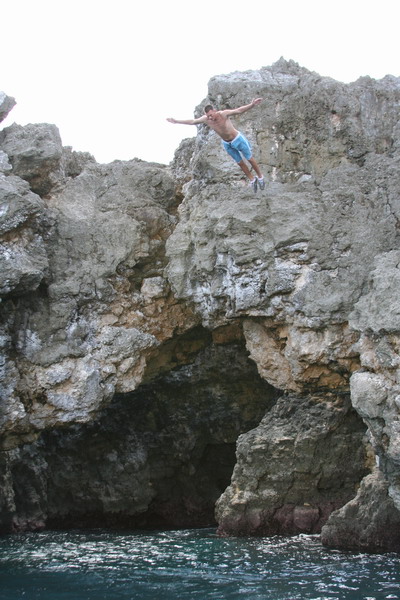
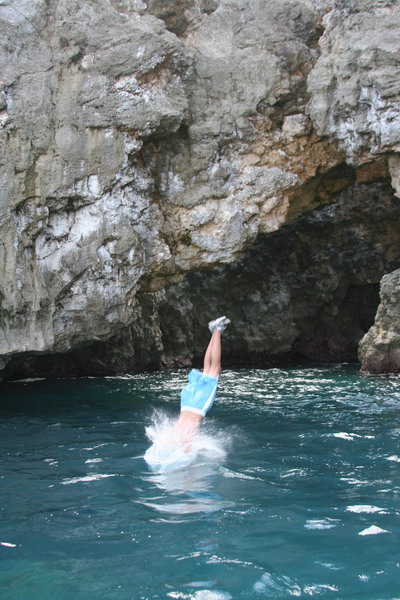
All four of us (including Anna, who hadn’t jumped off a cliff since a bad landing in Palau last year) felt the thrill of freefall. I always love the feeling of flying through the air. It’s just the landing that sometimes hurts. Fortunately, the water is very forgiving (to a point).
Here’s the other side of the bridge.
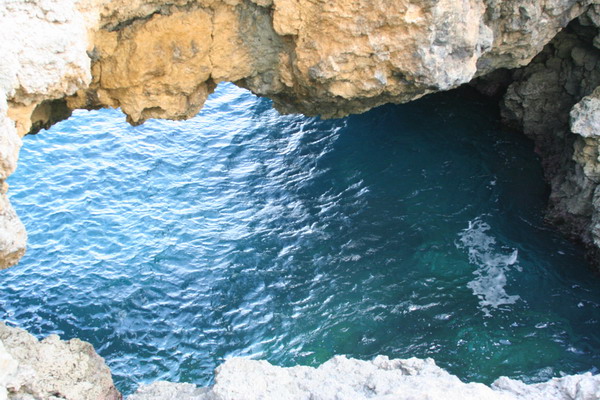
After the ocean, we needed some fresh water to rinse off in, so we went back up to the cave. When we got there, we found a couple candles burning, so we thought someone was already in the cave (and our entrance would be disturbing them), but the cave was empty. So, we light a bunch of candles ourselves so we could see without flashlights and cooled off the in very refreshing water of Pagat Cave. As you may recall, it was used as a water source for the ancient Chamorro village that is nearby. The water is a bit brackish (salty), but not too bad (don’t worry, I didn’t drink a lot).
This picture was the third one I had taken (after our eyes had adjusted to the light), so you can imagine how much the other three appreciated the flash (but the first two pictures didn’t turn out…). Sorry guys.
Although the flash ruins the lighting, you can still see how pretty the water is there.
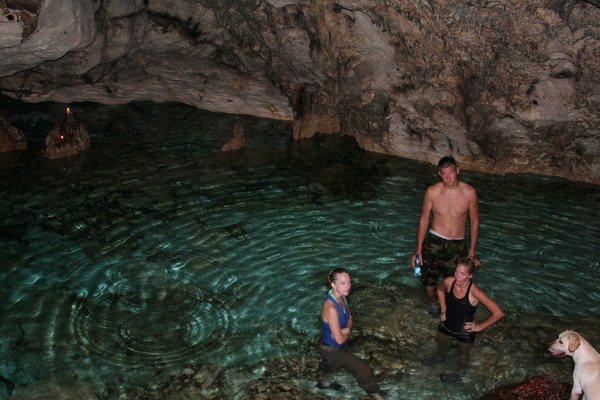
Then, we have the required post hiking pictures (perhaps to prove that we have survived another hike…)
Here are our friends Dennis and Amanda (and Jake), who we hope will go hiking with us another day. 🙂
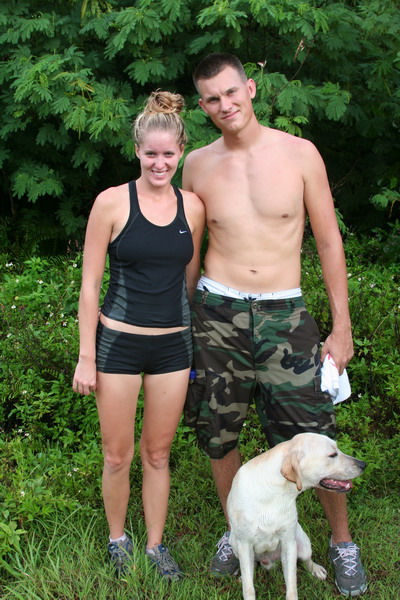
Amanda was kind enough to reciprocate the favor for Anna and me.
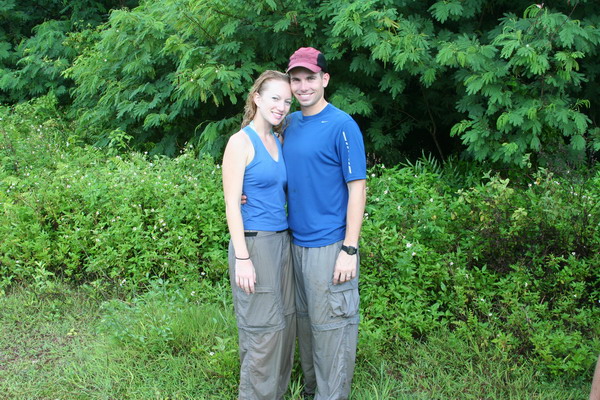
This is definitely one of our favorite hikes. It has a little of everything, jungle, cliffs, history, adventure and cool and refreshing cave pools. We highly recommend it.
So, until our next adventure…
–Jim
